This is a list of 17 B2B marketing strategies that are working great right now.
Thanks to the techniques in this post, my site brings in 449,058 unique visitors every month:
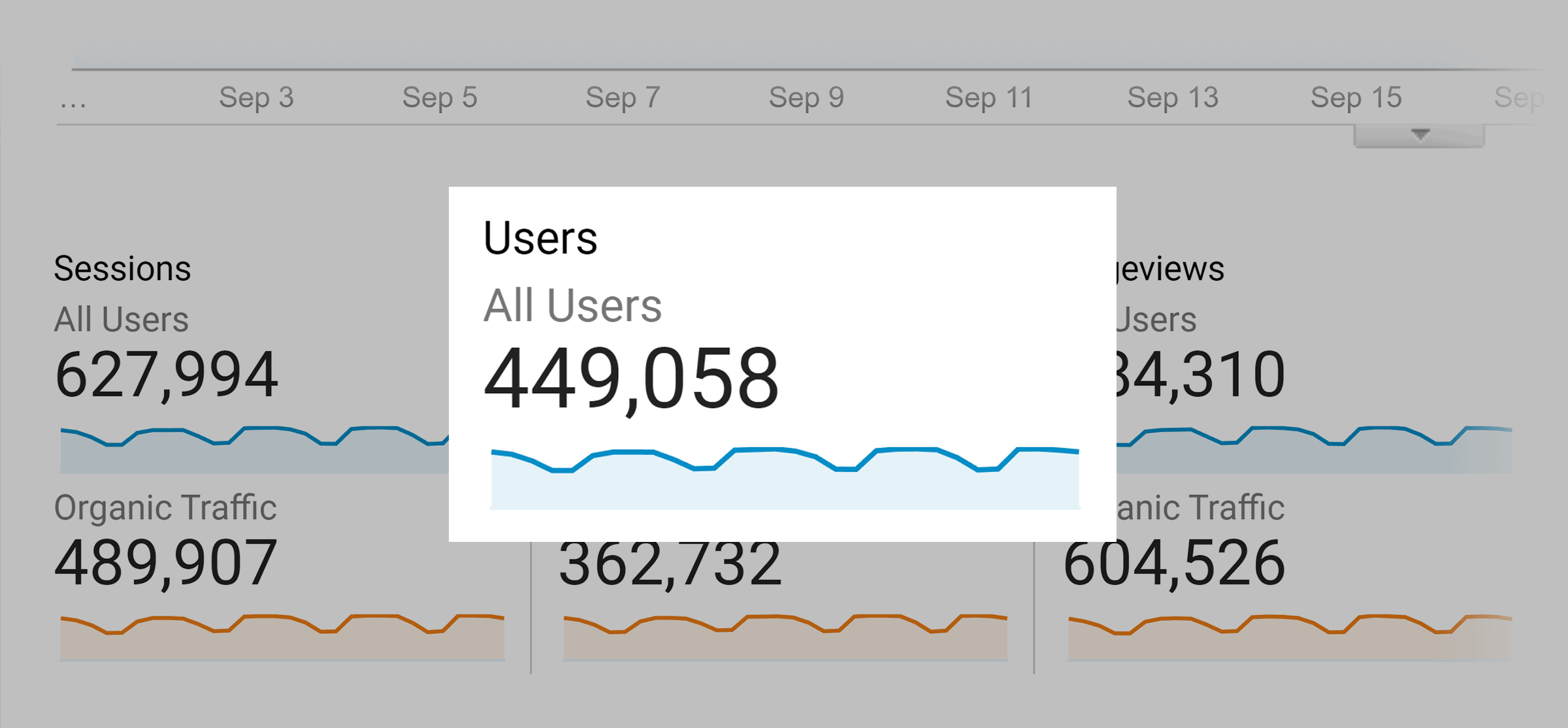
1. Write Ultimate Guides
Ultimate guides are one of the best content formats for B2B businesses.
For example, this ultimate guide on my site generates 15,210 visits every month:
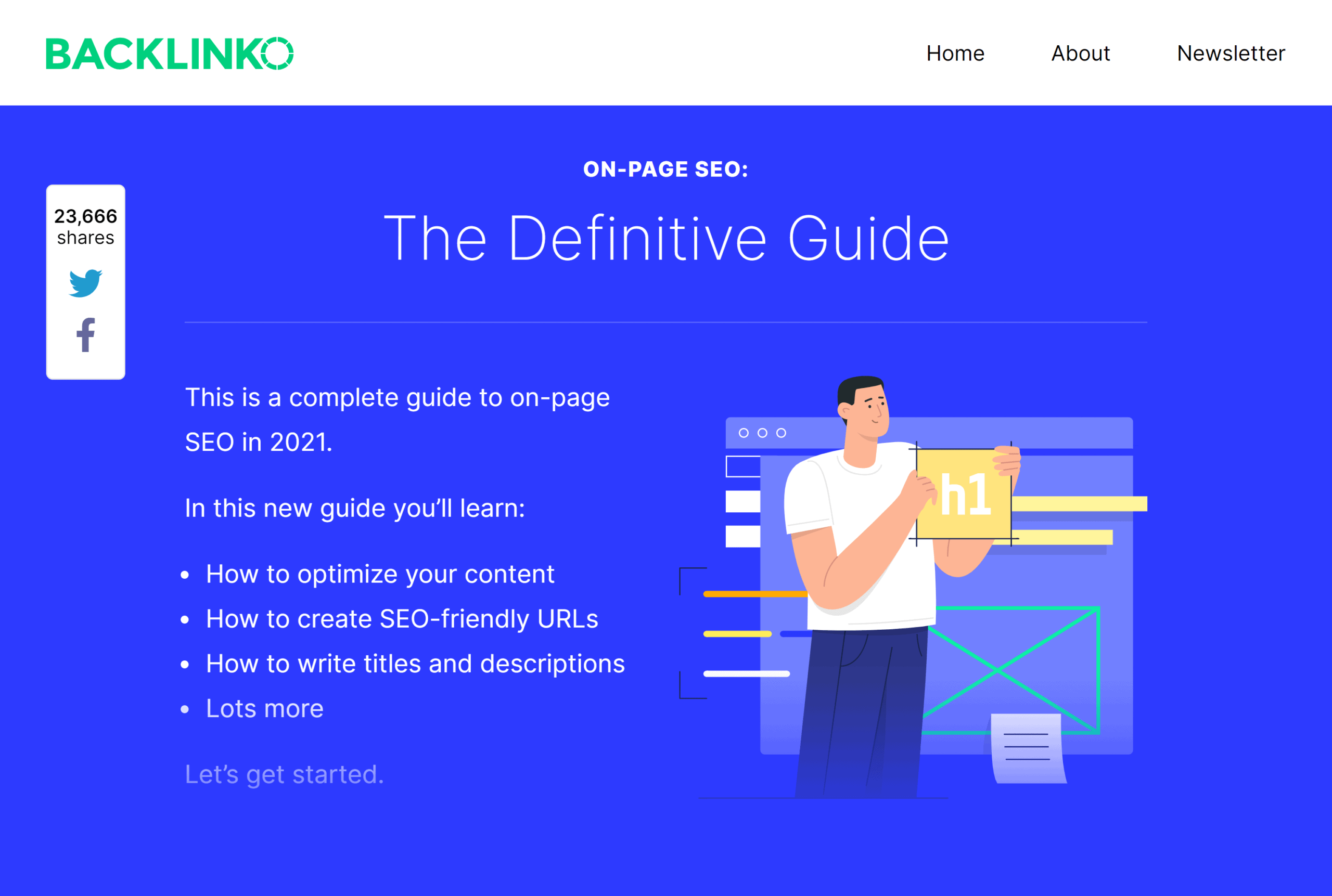
Why do ultimate guides work so well?
First off, guides tend to be super long.
According to a content analysis that I conducted with BuzzSumo, longer content gets an above average amount of social media shares.
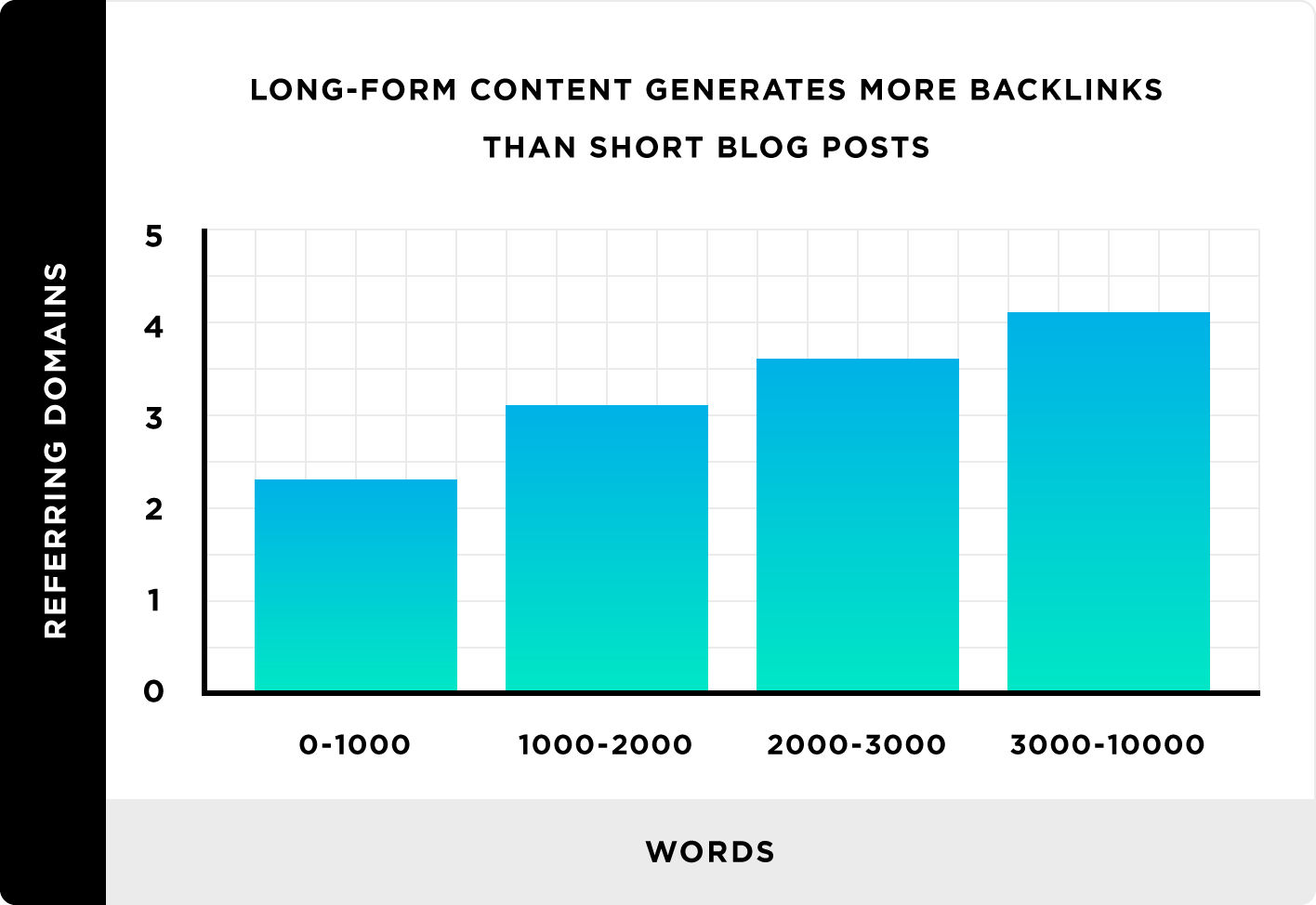
In fact, that guide I mentioned earlier is 4k+ words.
Which is MUCH longer than most blog posts in the B2B space.
Second, guides cover an entire topic in a single page.
This is a big one.
B2B decision-makers are busy. VERY busy.
And they love “one-stop shopping” content: content that tells them everything they need to know in one place.
For example, my guide to keyword research attempts to hit all the key points someone would need to know: brainstorming keywords, tools, choosing keywords and more.

Fortunately, creating an ultimate guide doesn’t have to be hard.
Or complicated.
All you need to do is combine several blog posts into one HUGE page.
For example, a while back I wanted to write about the topic: “email marketing”.
I COULD have divided that topic up into 5-10 different blog posts. And optimized each one around a long tail keyword.
The problem is: each of my blog posts would be super short. And not really super in-depth.
So I quickly realized that I should combine these short posts into a massive guide.
A guide that covers literally every angle of email marketing you can think of… in one place.
Specifically, I made each section of my guide (I called them “chapters”) a mini blog post.
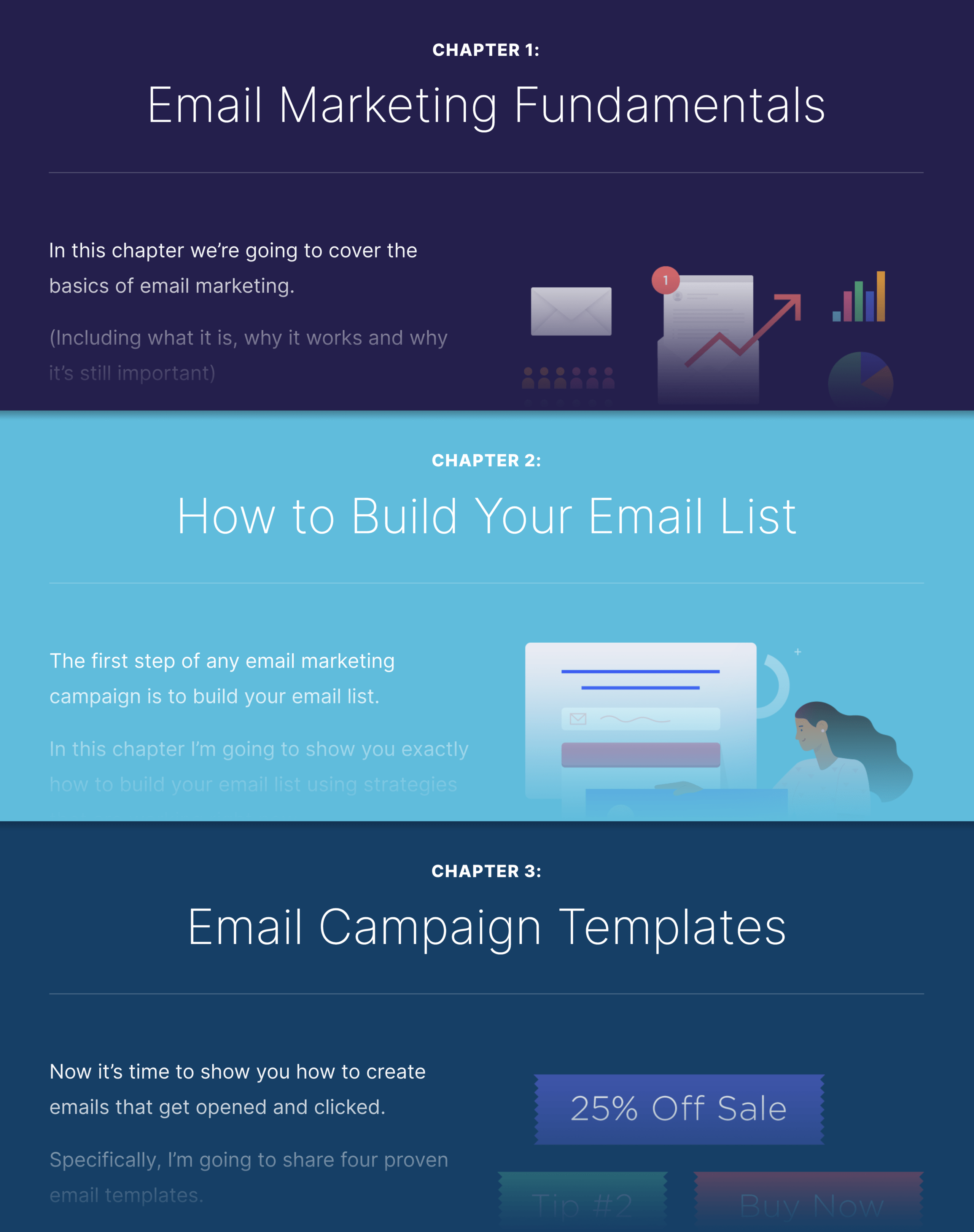
Then, I combined them together. And I had myself an epic guide.
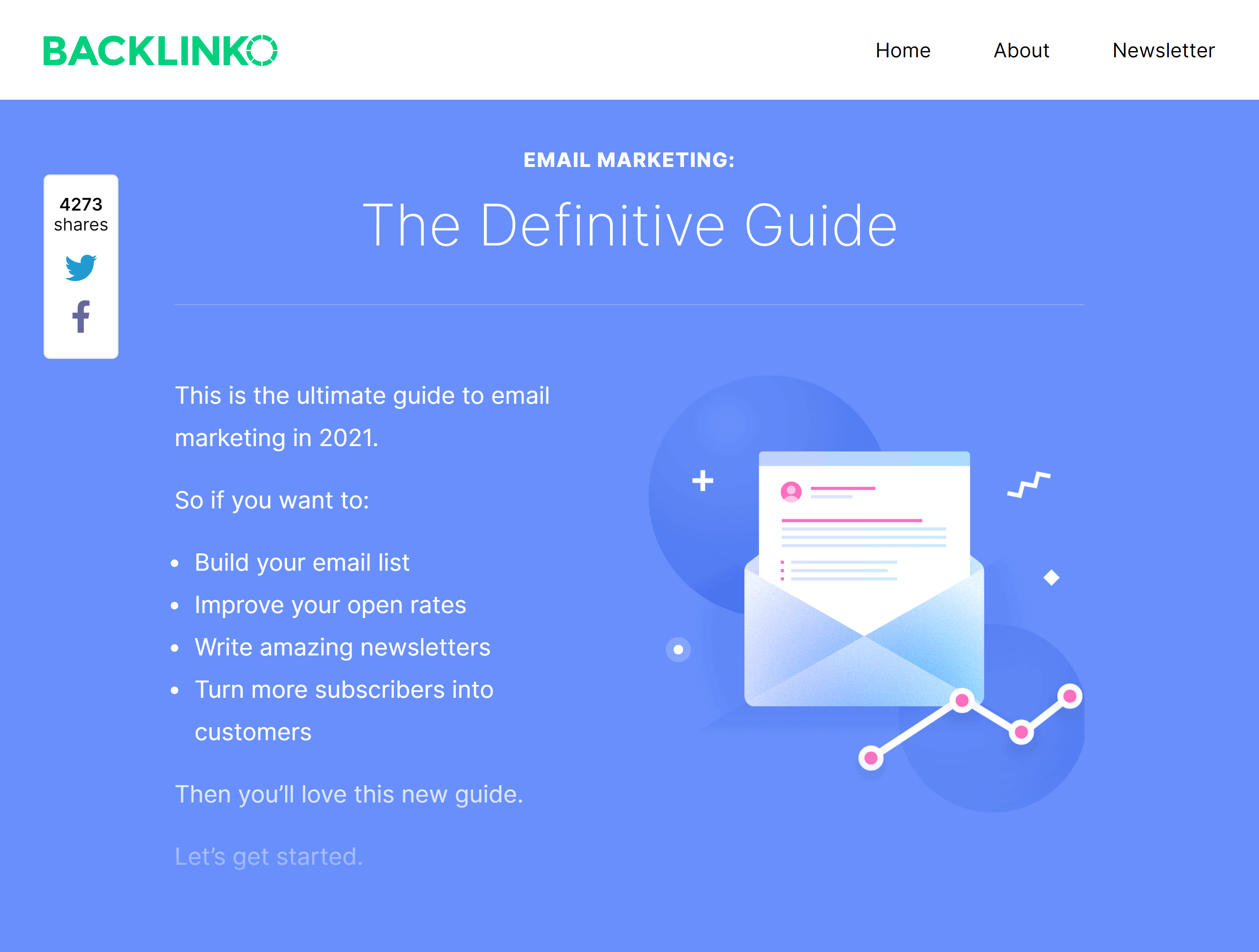
A guide that’s racked up:
- 35,414 lifetime visitors
- 139 backlinks
- 3k social shares
- 245 comments
2. Create a Weekly Newsletter
A weekly email newsletter is GREAT for:
- Growing brand awareness
- Driving targeted traffic to specific places
- Lead generation
- Launching and selling new products
- And more
In fact, I can draw a straight line between the growth of my other B2B company (Exploding Topics) and our weekly newsletter.
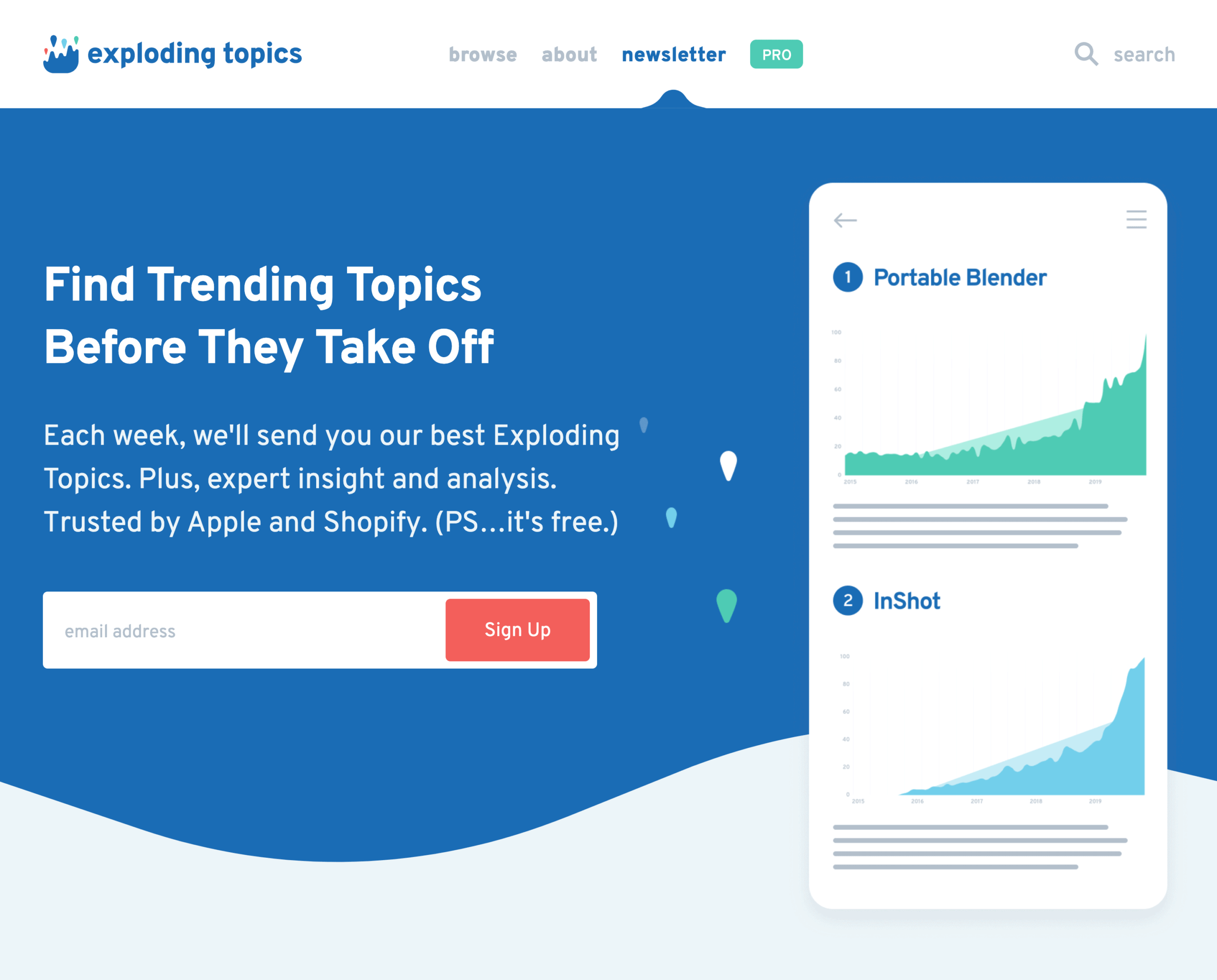
The trick is to create a format that allows you to easily send a newsletter each week.
At the same time. On the same day.
From sending millions of emails, I’ve learned that sending at the same day and time each week is huge.
That way, subscribers start to expect your emails. Which leads to more opens and engagement.
For example, our weekly Exploding Topics emails cover 4 different topics each week:
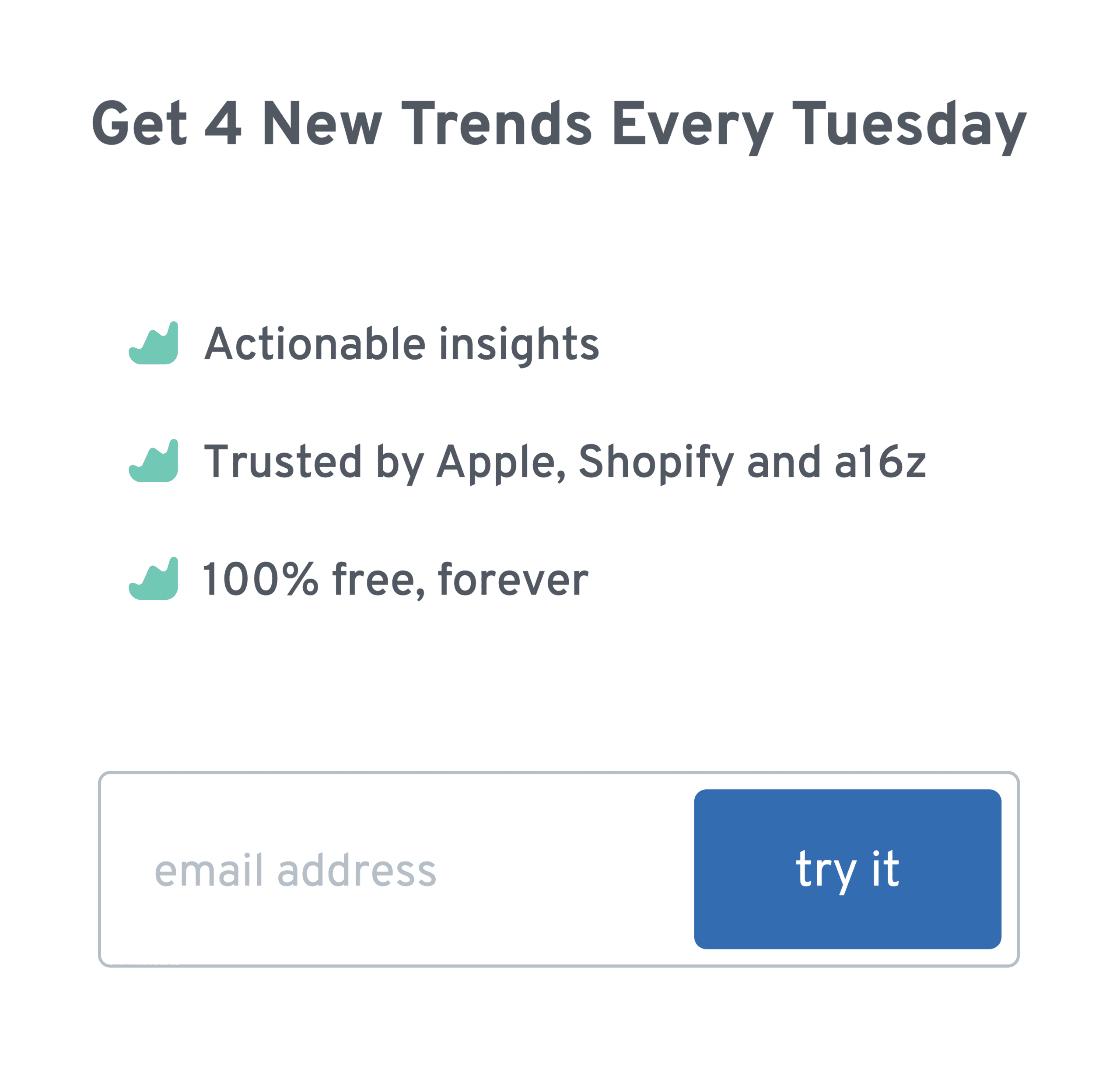
This is great for us because we don’t need to reinvent the wheel every week.
Just plug in 4 topics. Write about them. And hit “send”.
And subscribers love it because they know what they’re getting. This is why our open rates tend to be well above the industry average.

In fact, our newsletter even got a shout-out from Wired founder Kevin Kelly.
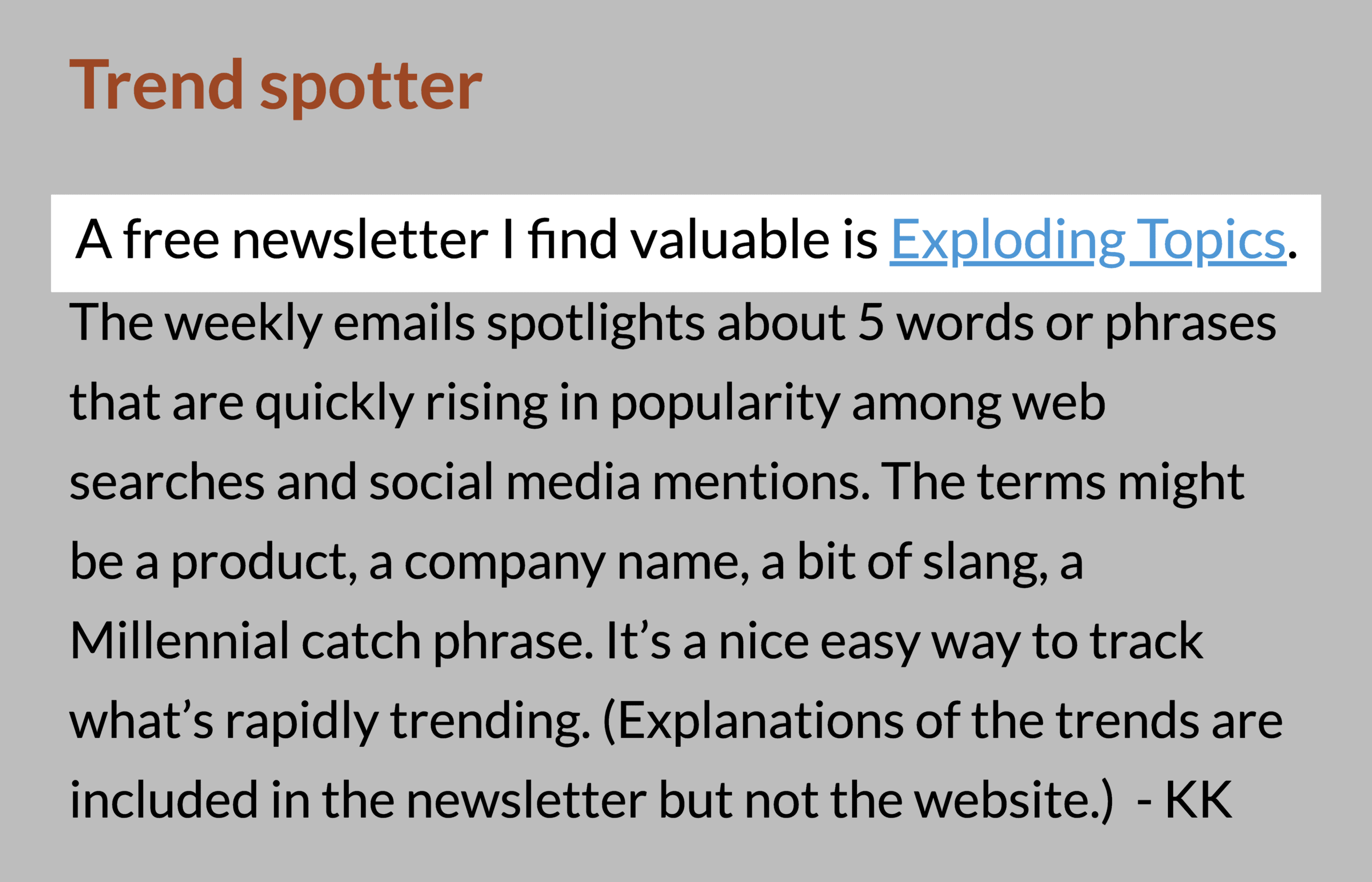
And that wouldn’t have been possible if we didn’t stick to a regular, weekly schedule for our newsletter.
3. Produce Data-Driven Content Pieces
The fact is:
Anyone can write a blog post.
Anyone can make a video.
And pretty much anyone can record a podcast.
This is why all of those formats are SUPER competitive.
But there’s still one content format that’s largely untapped: data-driven content pieces.
Here’s a real life example from my site: How Google Ranks Google Lens Results.
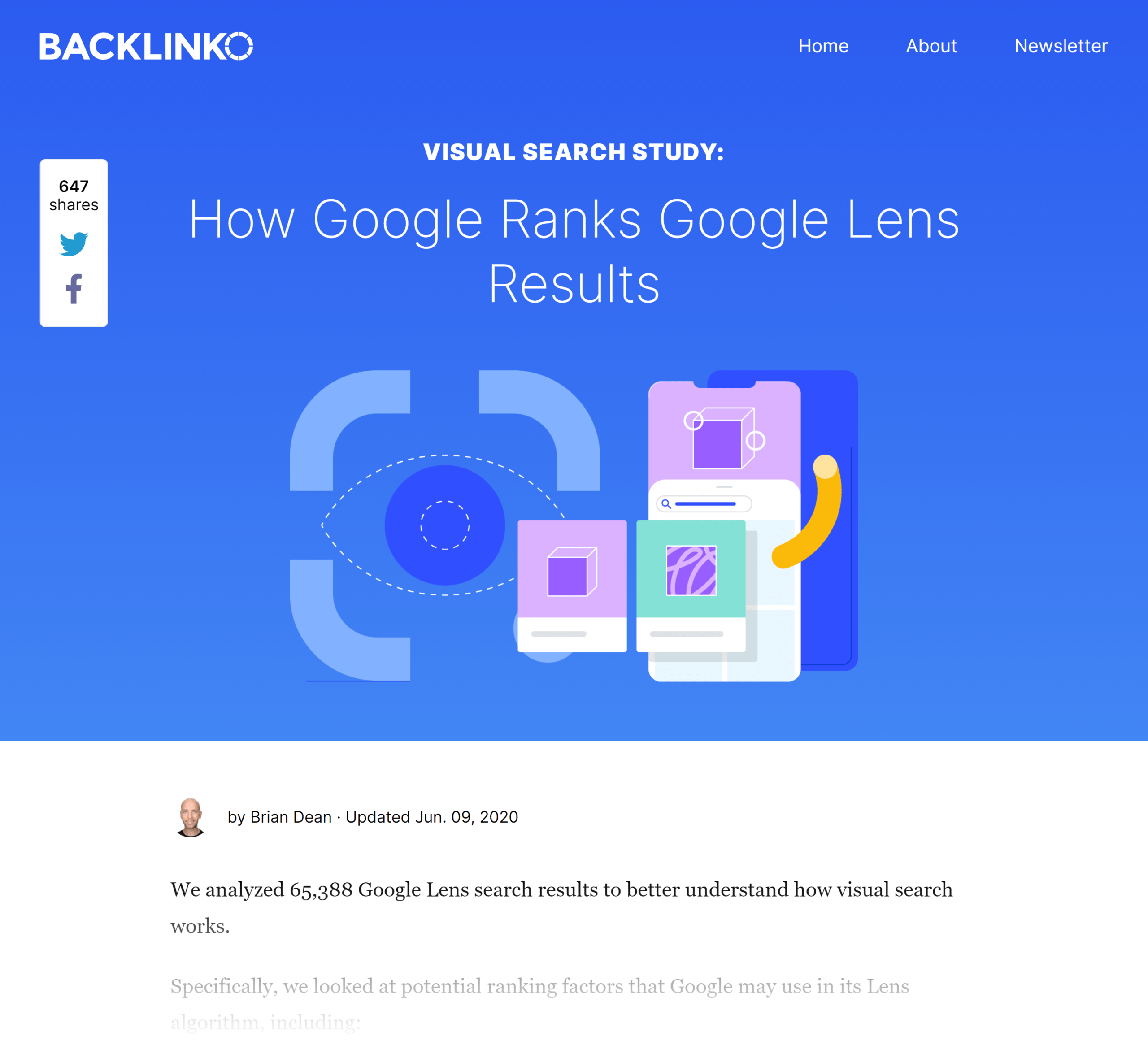
We looked at the factors that Google might use in their Google Lens algorithm. And wrote about our results.
To be clear: this piece was 10-20x harder to create than a list post, case study, or guide.
But this post was “original content” in the legit sense of the word. This is why it got quite a few shares on social media.
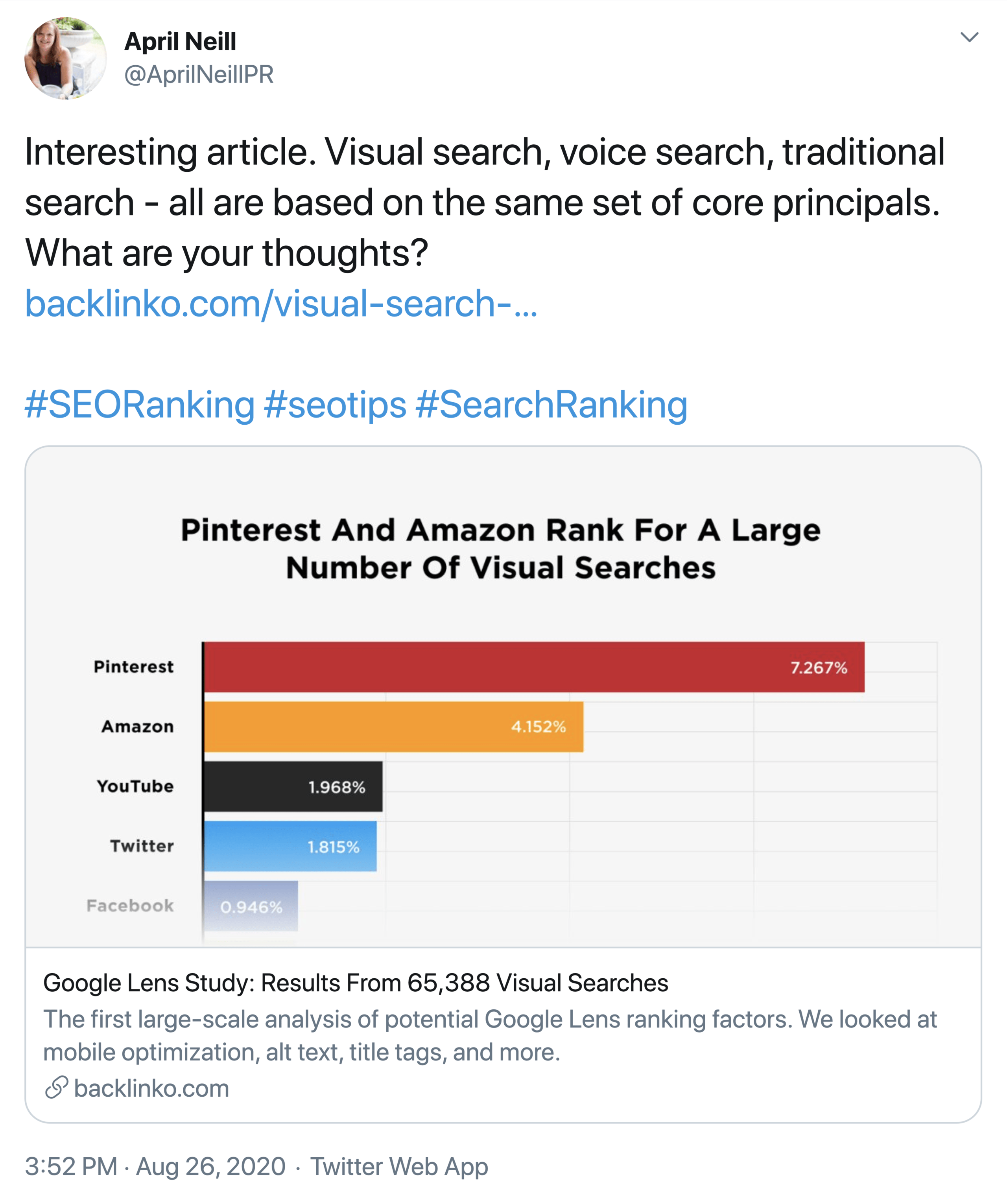
And this post has already generated quite a few links from influential blogs in the digital marketing space.

With that, here are some ideas for data-driven content pieces that work great in B2B:
- Surveys of people in your niche, like IT department heads, CFOs, or B2B marketers.
- Rankings of top companies or tools based on revenue, NPS score or website traffic.
- Data analysis of average salaries, industry growth or pricing.
4. Evaluate Your Site’s SEO
SEO is one of the most important traffic sources for B2B businesses.
And in my experience, most B2B brands tend to overly-focus on things like keywords, content and backlinks.
Yes, those things ARE important.
But it’s ALSO important to regularly evaluate your site’s SEO situation.
In other words: an SEO site audit.
Here’s how:
First, head over to the Google Search Console. And click on the “Coverage” report.

See if your site has any errors. Or “valid with warnings” pages.

If so, Google will give you specific guidelines on how you can fix those issues.
You also want to look at the “Valid” pages report.
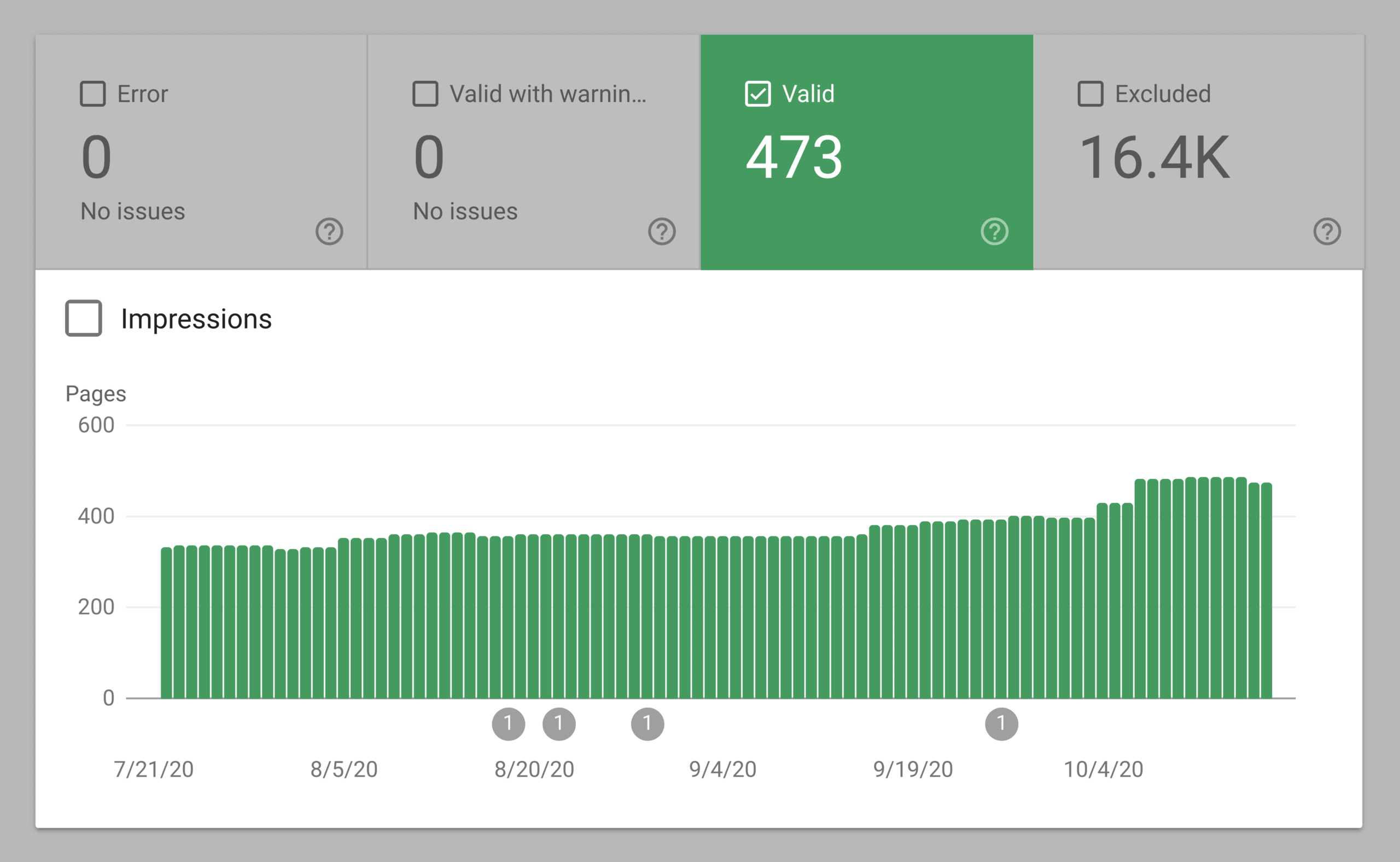
This shows you how many pages from your site Google has indexed.
If you’re like most sites, you’ll probably find pages on this list that shouldn’t be indexed. And if this happens to lots of pages, it can lead to page bloat. Which can hurt your overall Google rankings.
For example, I recently noticed that a lot of our “almost done” pages were getting indexed.
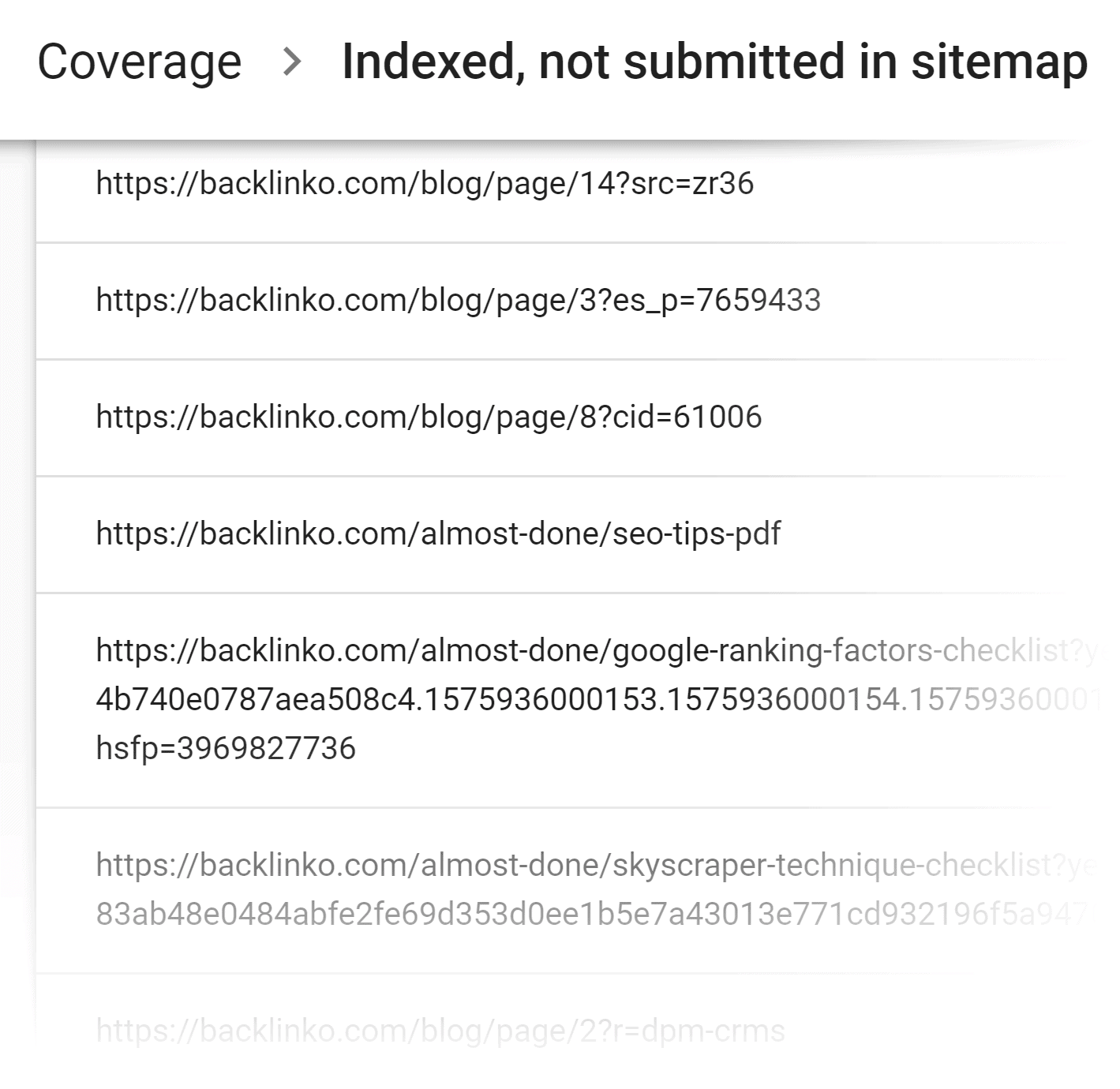
These are pages that people see when they sign up for our newsletter. There’s no reason that they should be indexed. So we quickly added the “noindex” tag to those pages.
Once you’re done with Search Console, I recommend using a SEO audit tool to dig deeper into your site’s technical SEO health.
For example, SEMrush has a very helpful SEO audit feature built into the tool.
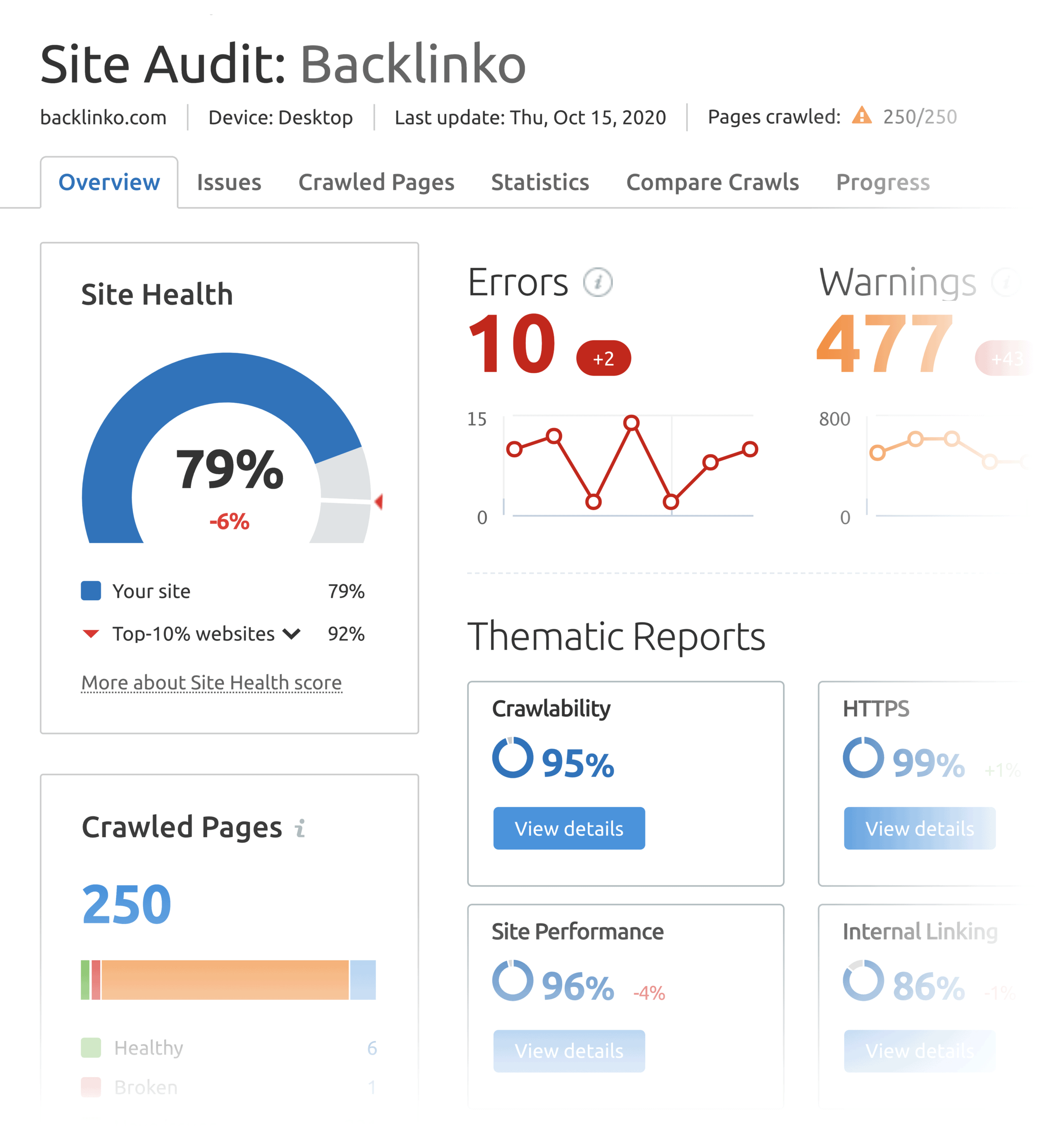
No matter what tool you use, you’ll usually come across issues (like duplicate content and missing meta descriptions) that the Google Search Console doesn’t show you.
5. Post Engaging Posts on LinkedIn
It’s no secret that LinkedIn is THE B2B social network.
(In fact, LinkedIn recently hit 690 million users.)
Question is:
How can you get targeted traffic from LinkedIn?
Post super engaging posts.
Specifically, posts from employees at your company.
An industry study published at Social Media Today found that employee posts got 8x more engagement than brand posts.
Which makes sense: people want to engage with people on social media.
Not brands.
For example, HubSpot founder Dharmesh Shah posts company updates on his LinkedIn.
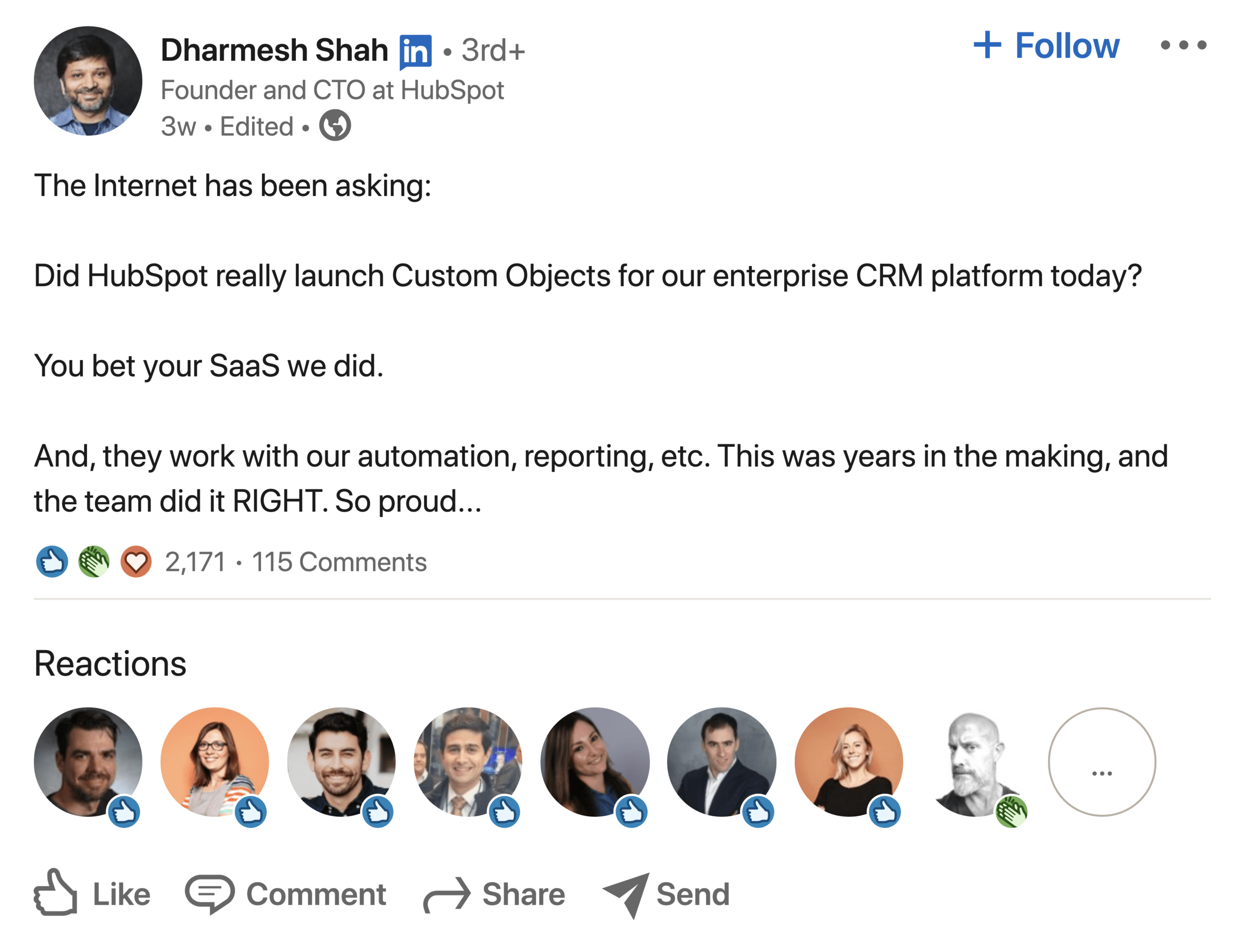
And as you can see, his posts get a decent chunk of comments and likes.
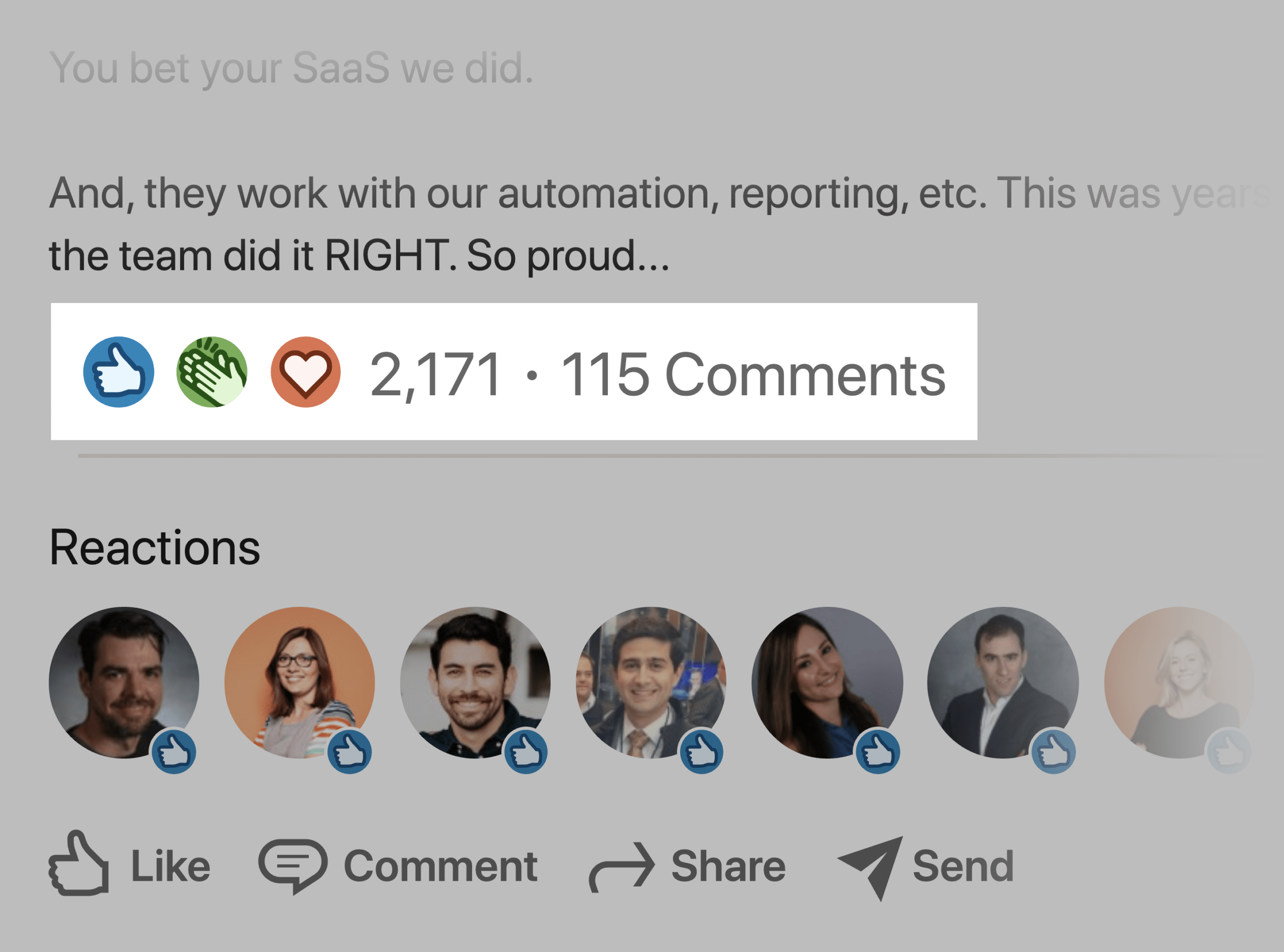
MUCH more than the same post would get if it was posted from the official HubSpot brand account.
In my case, I share anecdotes, stories and business lessons on my LinkedIn.
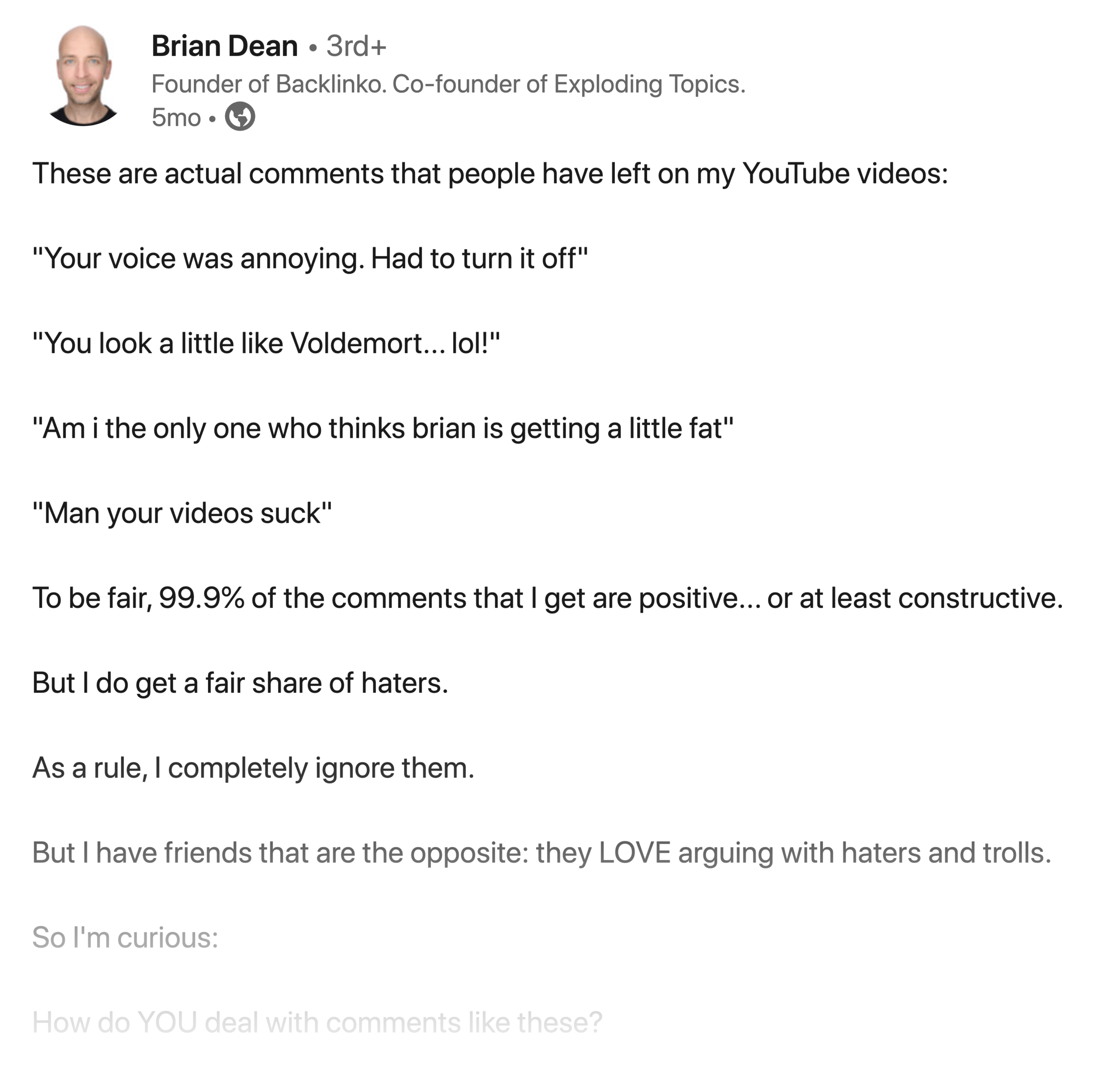
And my LinkedIn posts get way more engagement than Facebook, Twitter… or pretty much any other social network that I’m active on.
6. Launch a YouTube Channel
83% of marketers in one survey said that video has helped them get more leads.
83%!
And if you’re serious about video marketing for your B2B business, you definitely want to focus on YouTube.
That’s because YouTube has over 2 billion users.
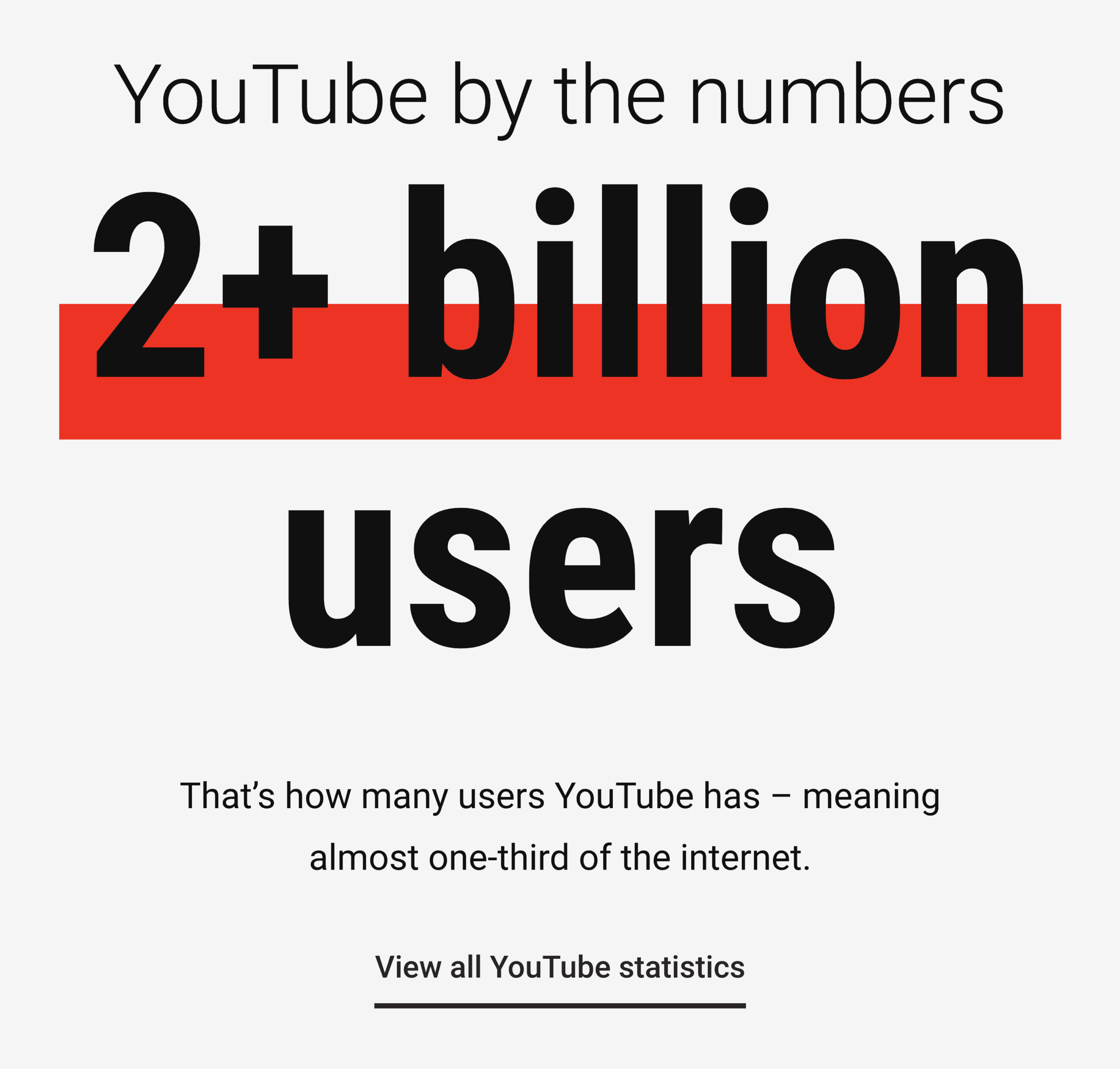
Yes, people visit YouTube to watch cute cat videos.
But YouTube is also the place that decision-makers go to learn about topics like supply chains, digital marketing, invoicing… and lots of other “boring” B2B topics.
In fact, my YouTube channel is one of the main sources of traffic, leads and sales for my B2B business.
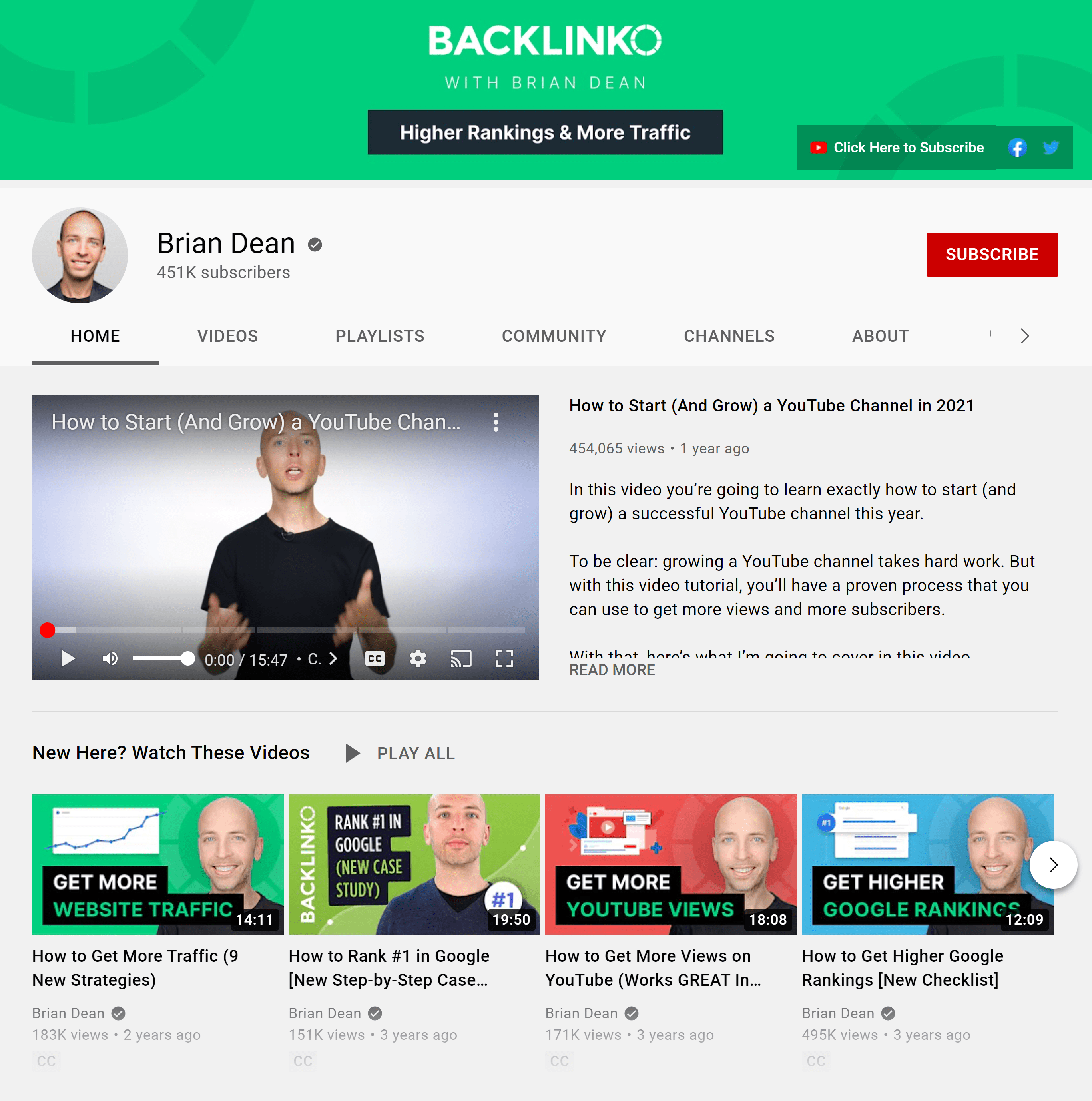
It wasn’t easy. And it took hard work.
But today, my channel boasts 451k subscribers.
And 189k people see my videos each month.

So if you want to launch your own YouTube channel, here are two resources to get you started.
(Both of which are designed to help B2B-focused channels.)
First, you’ve got this video from my channel called “How to Start (And Grow) a YouTube Channel”.
The title pretty much says it all.
But it’s basically a quick-start guide to help your new channel get on the right track on Day 1.
Second, you can check out the YouTube Marketing Hub.
It’s a free collection of resources that cover topics like video editing, YouTube SEO, and more.

7. Write “VS” Comparison Blog Posts
“VS” comparison blog posts are a GREAT way to get in front of B2B buyers.
But more important than that: they allow you to get in front of potential customers when they’re far down the marketing funnel.
For example, check out this post from ConvertKit.
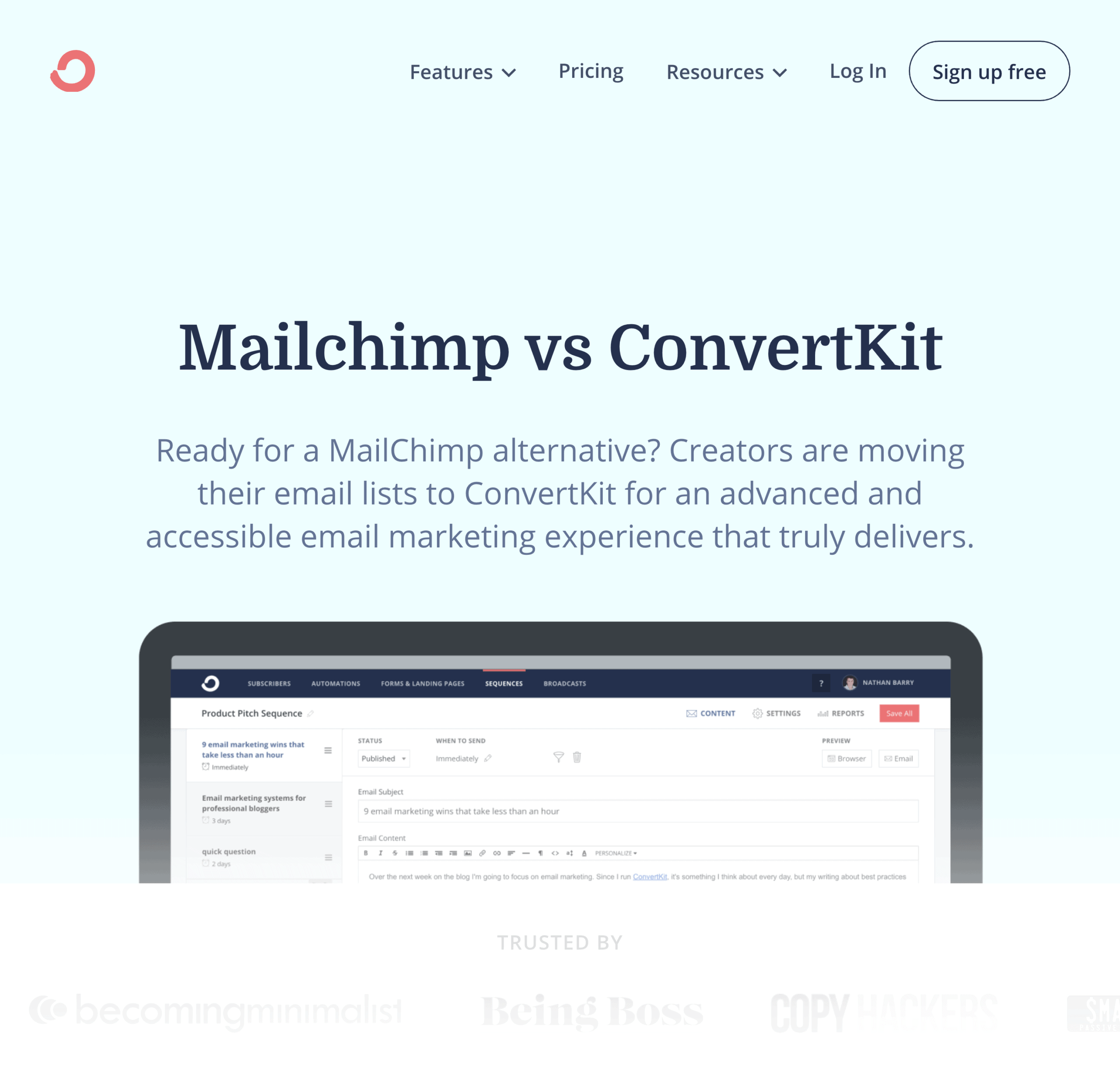
As you can probably guess, this post is optimized around the keyword “Mailchimp vs ConvertKit”.
As you may know, Mailchimp is one of ConvertKit’s main competitors in the email marketing software space.
And they realized that people searching for “Mailchimp vs ConvertKit” were far along the buyer’s journey.
Specifically, these potential customers knew they wanted email marketing software. But they weren’t sure which one was the best option for them.
So they created a post designed to rank for that term.
A post that outlined the pros and cons of each tool.

Obviously, this post is biased in favor of ConvertKit.
Despite that, it still ranks in the top 3 of Google for its target keyword.
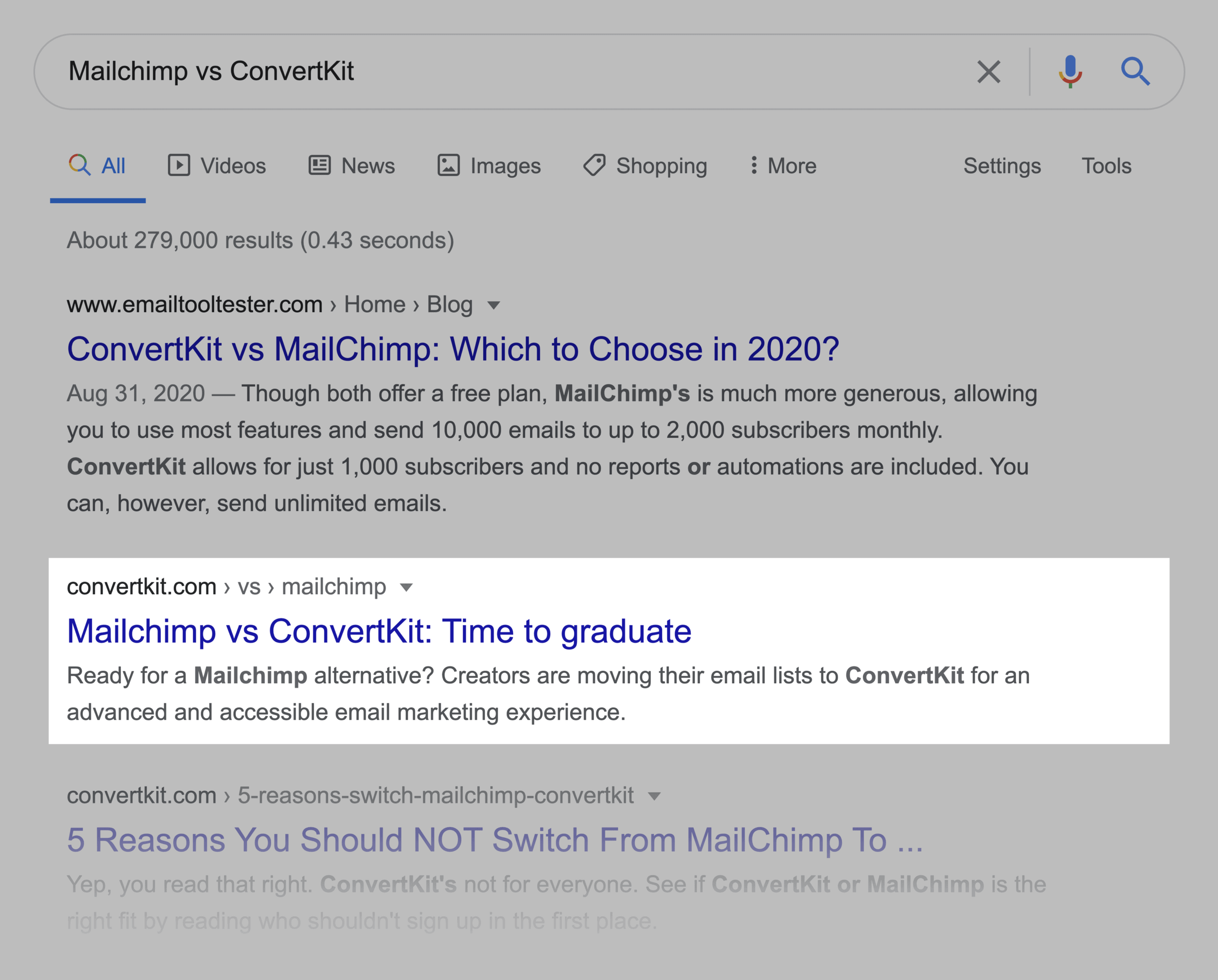
This helps ConvertKit get in front of people that are deciding between the two tools.
That said:
You don’t need to write a post that compares you with a direct competitor.
You can also publish content that compares and contrasts two different concepts, approaches or popular tools in your industry.
Here’s a real-life example of this type of VS comparison post from my site.
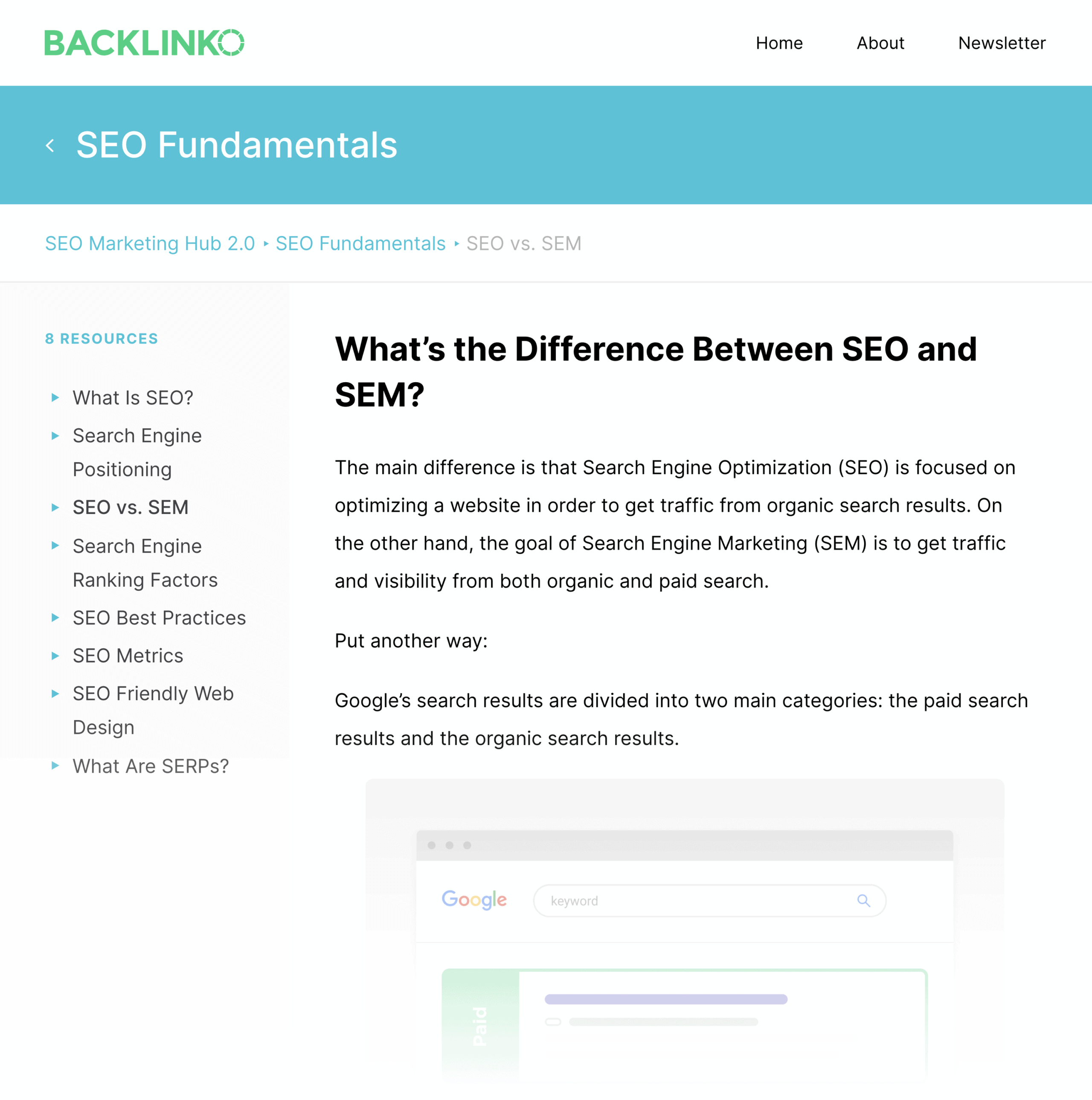
According to my Google Analytics, that single page brings in 2,398 visitors per month.
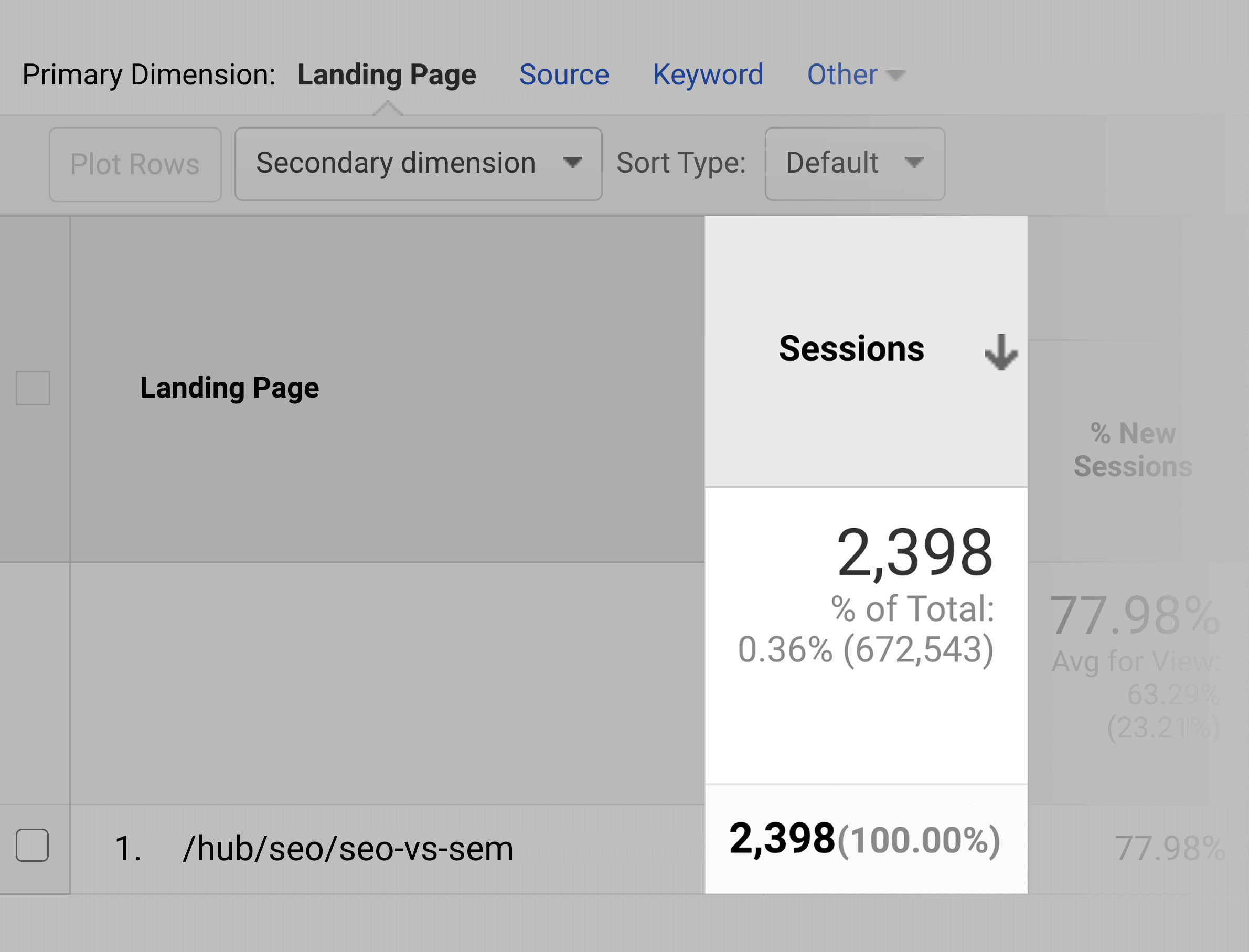
(Mostly from people searching for “SEO vs “SEM” in Google.)
In short: I recommend sprinkling in some VS posts as part of your content strategy.
8. Publish “Tangential Content”
Tangential Content is a fancy way of saying:
“Content that’s not directly related to your industry”.
As it turns out, Tangential Content can help you get more traffic, social shares and backlinks from your content marketing.
In fact, a study published at Moz discovered that Tangential Content performed significantly better than content that was directly about what a company sells.
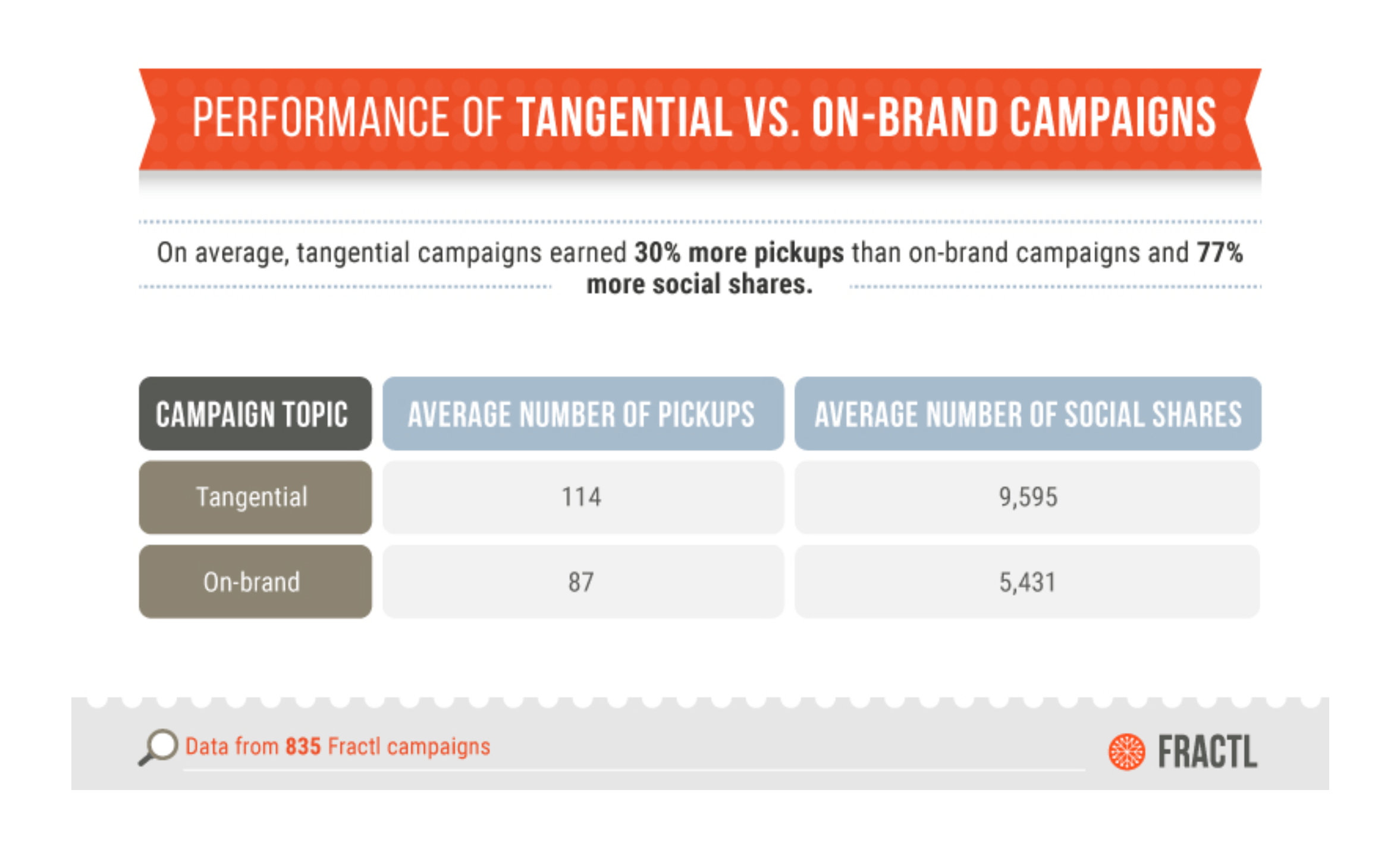
And this is an especially important approach for B2B marketing campaigns.
After all, most B2B content topics have VERY little mass appeal.
Which can make it tough to get press coverage and mentions on authoritative blogs.
That’s where Tangential Content comes into play. Tangential Content doesn’t have to be about what you sell or do.
As long as it’s somewhat related, you’re good to go.
For example, I recently published this piece of Tangential Content on our blog.

My business has nothing to do with the page loading speed, CMSs or web hosting.
But despite that, this post did GREAT.
In fact, that post brought in 22,527 visits in its first week. Which made it one of our most successful posts that quarter.
9. Coin Your Own Industry Terms
Buyer personas.
Sales funnels.
Webinars.
Marketing automation.
These are all terms that somebody made up.
And the companies that coined these terms increased their brand awareness every time someone mentioned their term.
For example, HubSpot is largely credited with the term “Inbound Marketing”.
According to Semrush, this term gets searched for in Google 12,000 times per month.
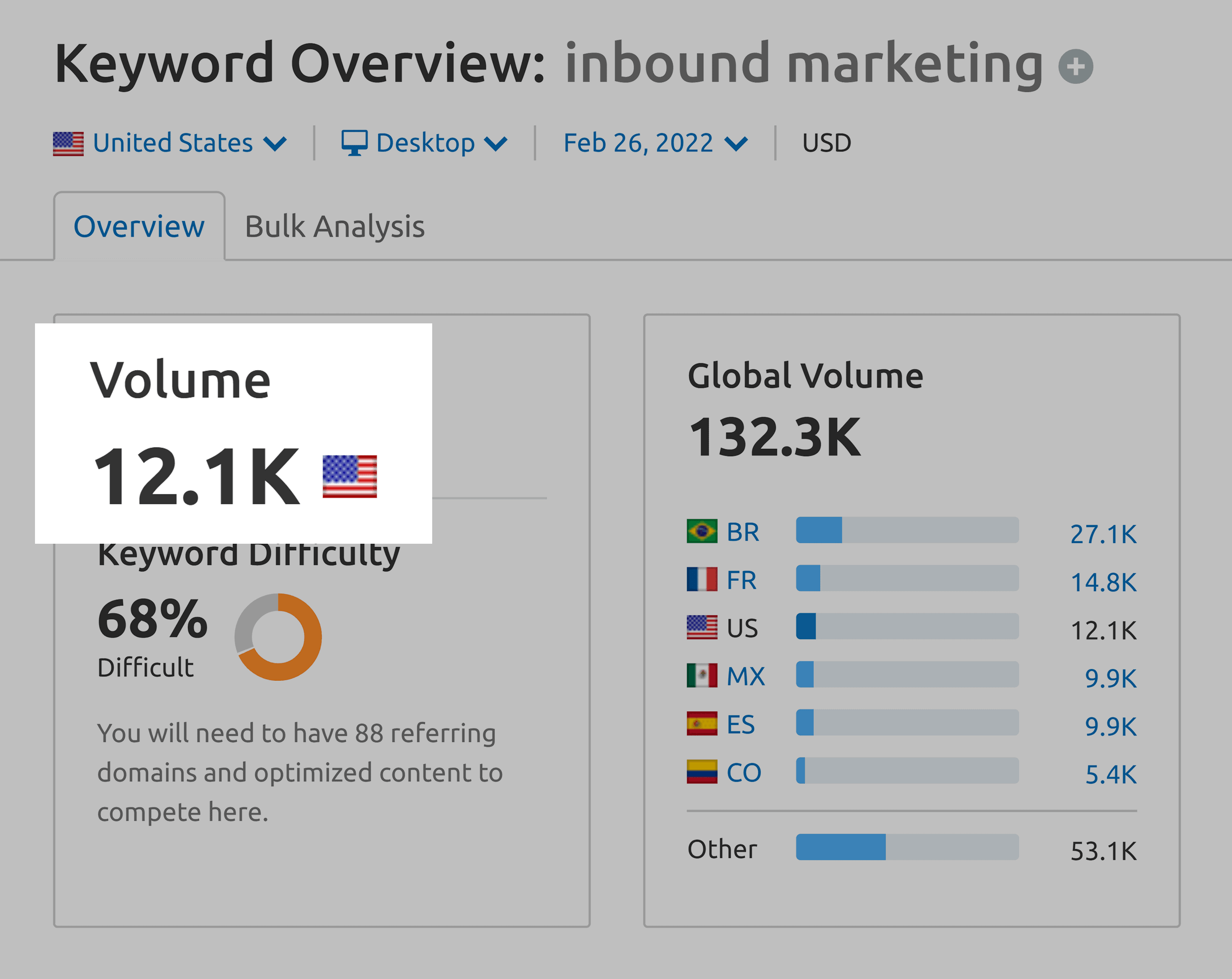
And who do you think ranks #1 for that keyword?
You guessed it: HubSpot.
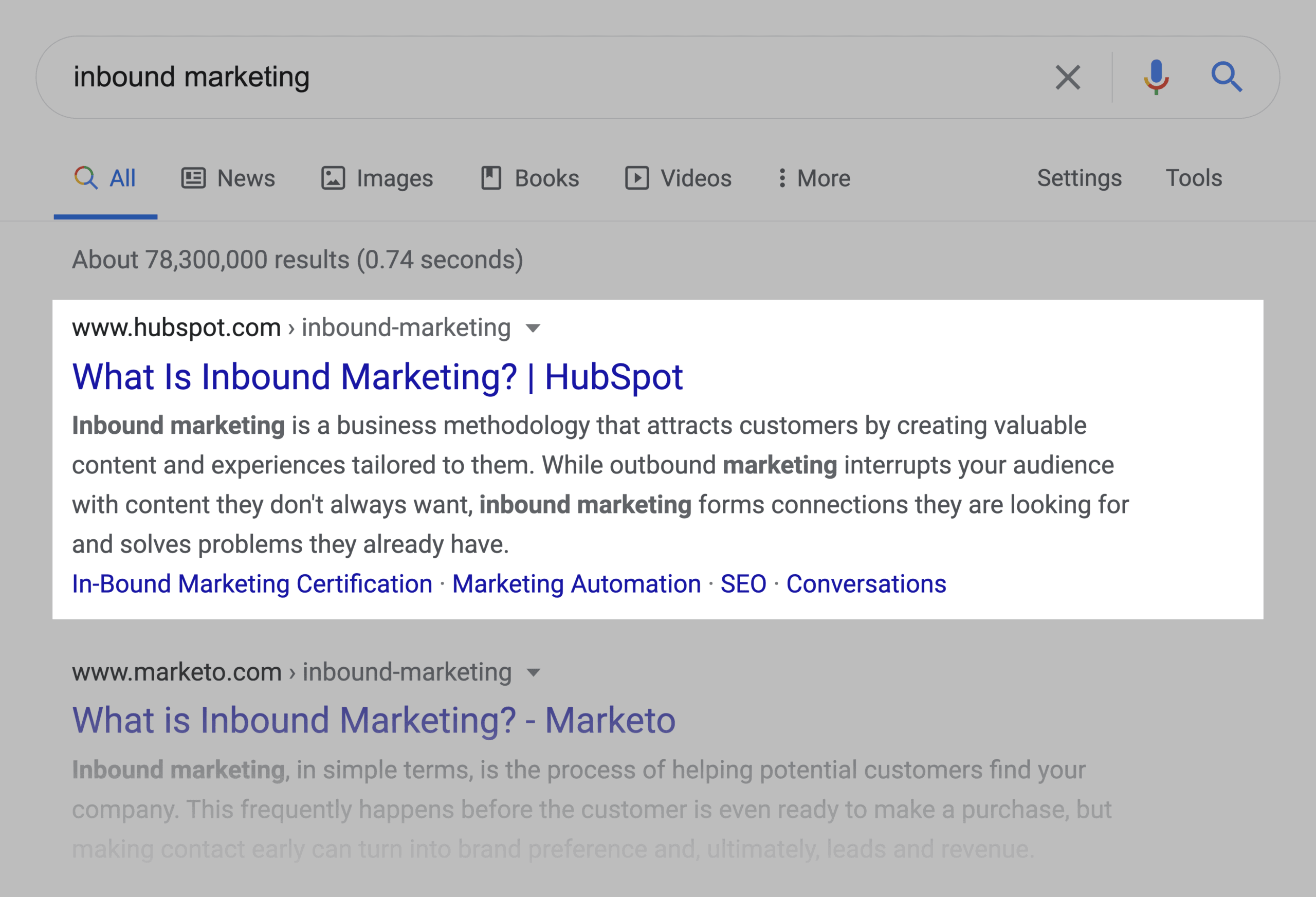
I’ve done this myself on a much smaller scale.
In 2013 I outlined a link building strategy called: The Skyscraper Technique.

The approach eventually caught on. Which has landed me literally hundreds of links and mentions in authoritative blogs in my space.

And the post where I first talked about The Skyscraper Technique continues to drive traffic to my site.
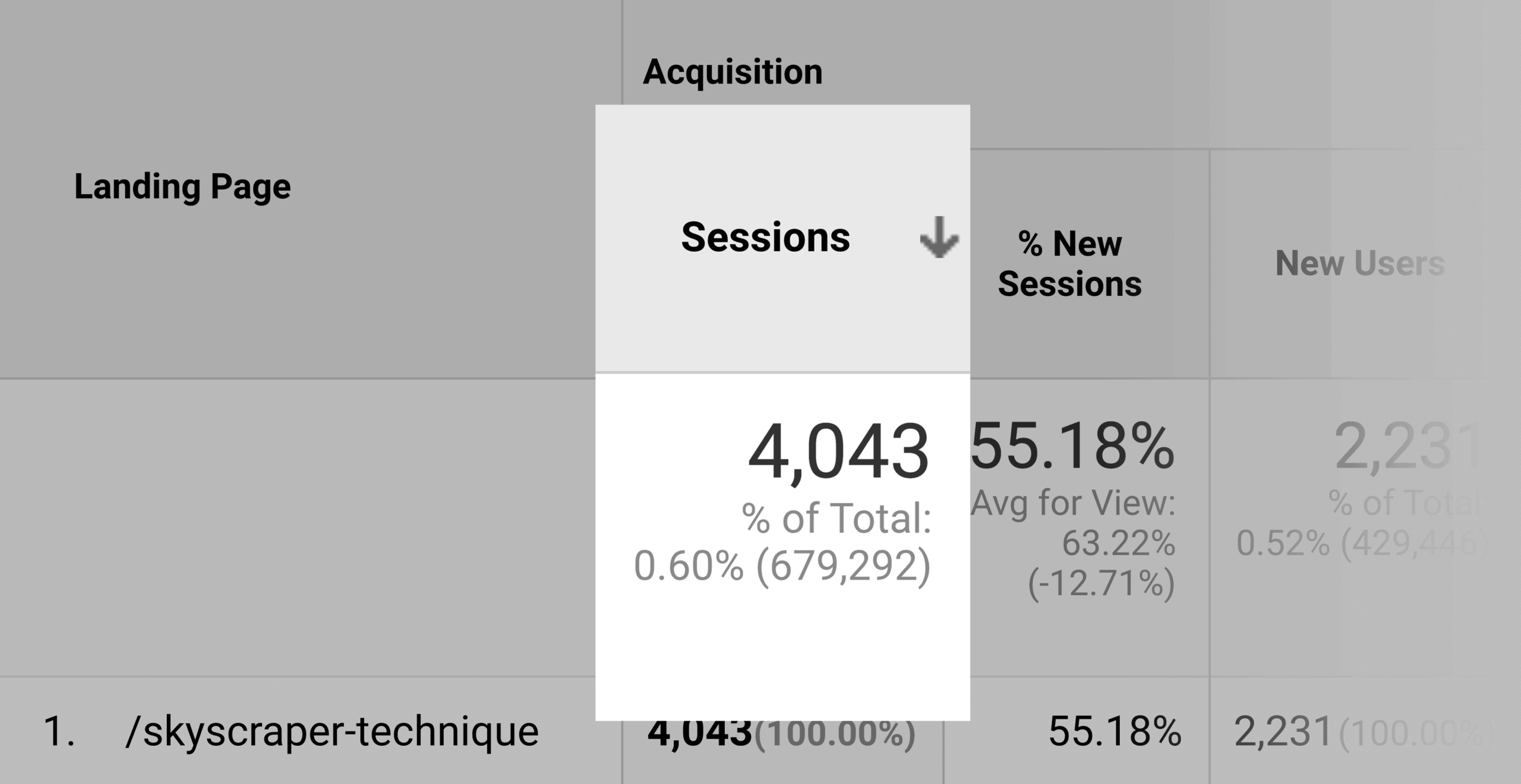
(Even though that post is 7+ years old.)
10. Split Test Key Landing Pages
Split testing is still one of the most effective B2B marketing strategies out there.
(That is if you do it right.)
Specifically, you want to test BIG changes on your landing pages… not different button colors.
For example, we recently tested two different variations of my headshots on the Backlinko homepage.

Everything else was exactly the same.
And this minor change got us… a relatively minor result.
Basically, a tiny potential .23% conversion rate boost for version B.
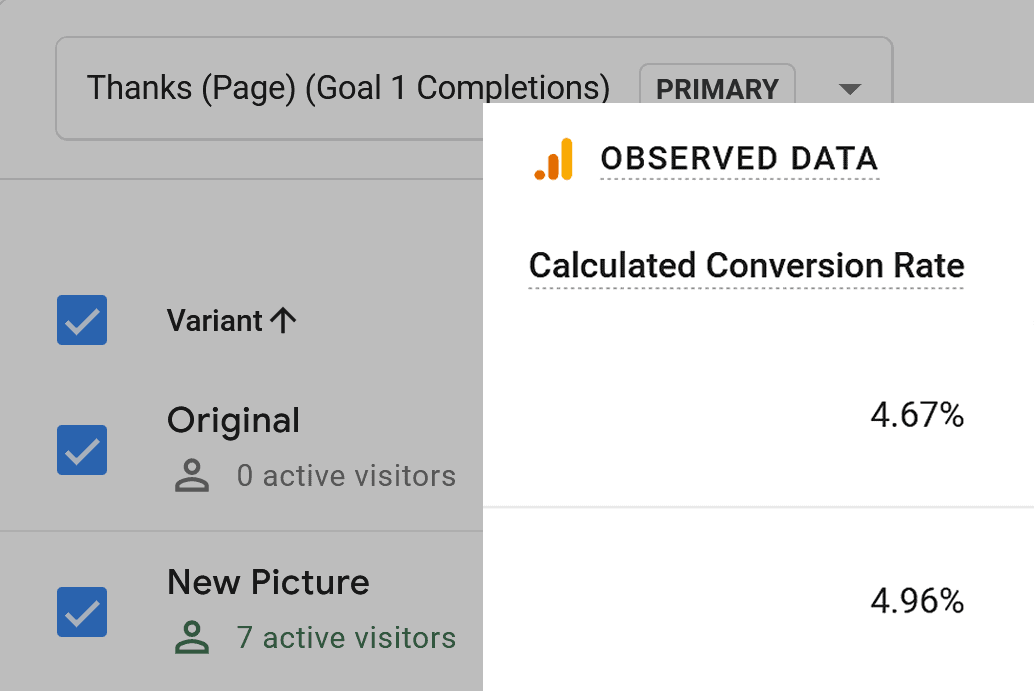
Earlier this year we tested two VERY different pages for this newsletter sign-up page.

One page was short. The other was long. One page used a benefit-focused headline. The other headline was more aspirational.
And because we tested two VERY different pages, the winning page performed 30% better than the other.
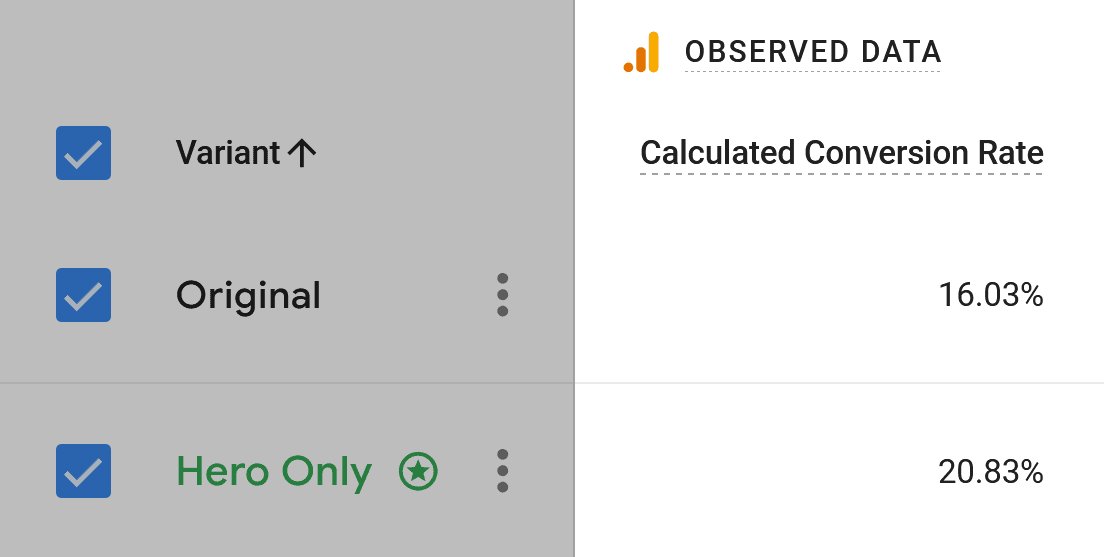
Now that we have a winner, we test smaller variations of that page.
(For example, different button copy.)
But it would have taken us months to get a 30% lift if we kept testing tiny little differences.
That’s why you want to start with significant changes. Then test smaller elements, like button color, copy and page layout.
So yeah, A/B testing still works.
But if you want to get GREAT results from split testing, make sure to test big differences at first.
11. Repurpose Existing Content
HubSpot reports that online businesses spend 46% of their marketing budget on creating content.
And the vast majority of that content is only used once.
Which is a giant waste of resources.
That’s why more and more B2B businesses are repurposing their content.

In other words, they’re turning blog posts into videos. Videos into podcasts episodes. And podcasts into Instagram Stories.
In short: content repurposing can give you a better ROI on the content you create.
For example, I’ve turned several of my popular blog posts into YouTube videos.
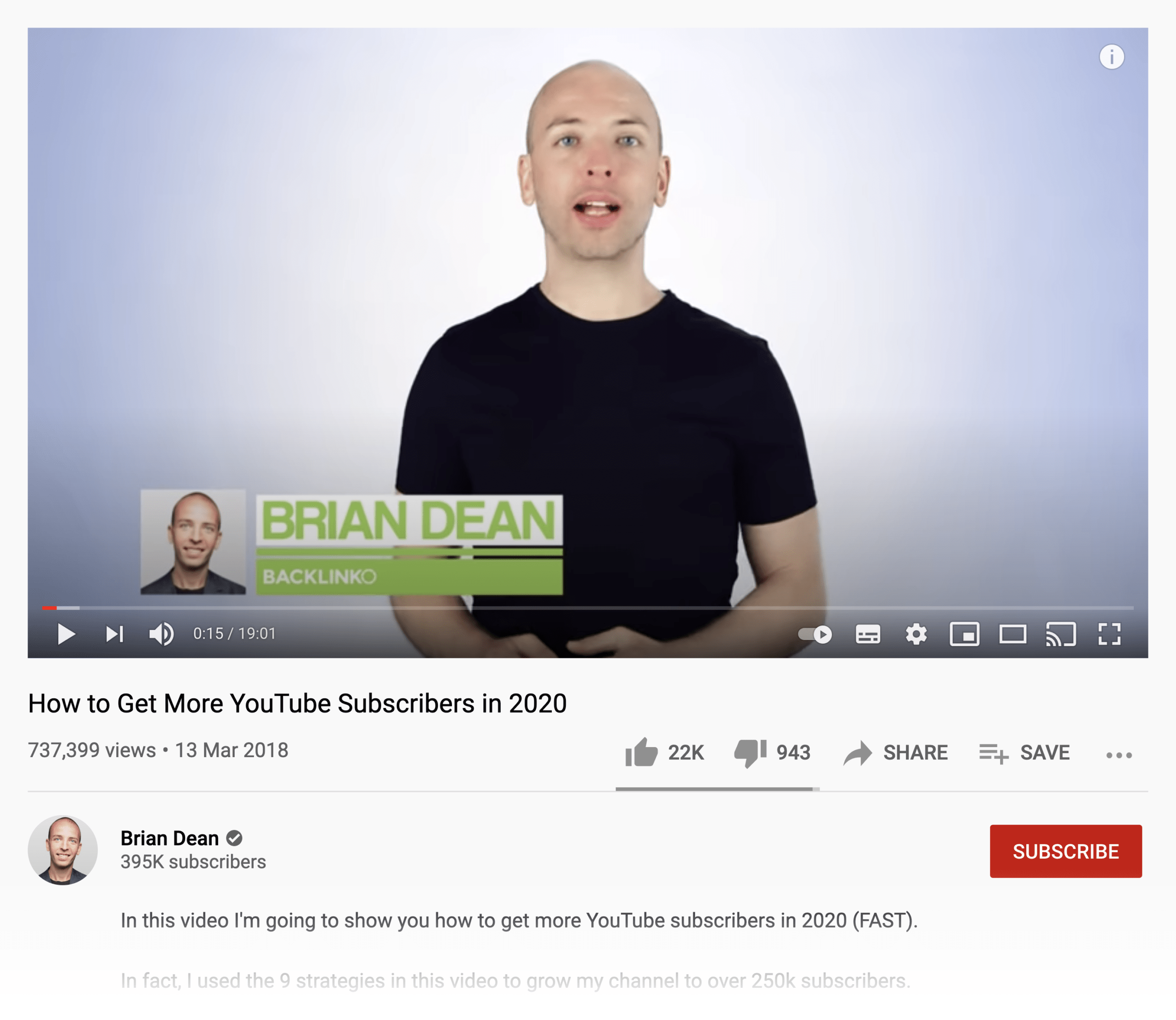
And I’ve spliced those videos into short clips for LinkedIn.
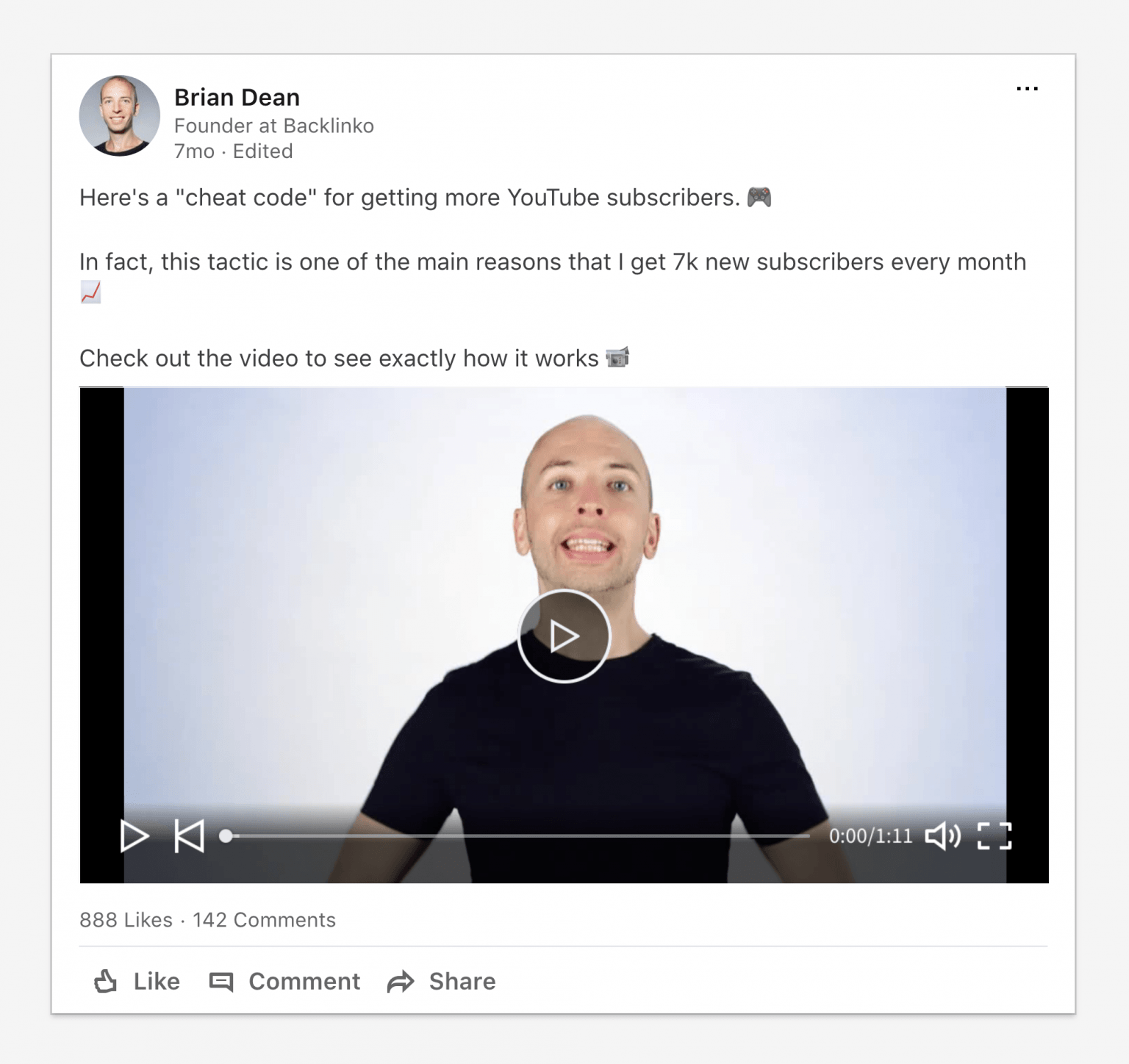
Which gives my content multiple chances to get in front of my target audience.
12. Target High Buyer-Intent Keywords
The hardest part of keyword research for SEO isn’t finding keywords.
It’s choosing them.
In fact, I see a lot of B2B businesses choosing keywords based almost solely on monthly search volume.
Search volume is an important metric for B2C marketing.
After all, B2C companies usually target a large group of potential customers.
But in B2B, you usually have a TINY group of buyers that you need to get in front of.
This is why you want to focus on keywords that have high buyer intent. Even if those keywords may only get 10-50 searches per month.
For example, check out this B2B keyword.
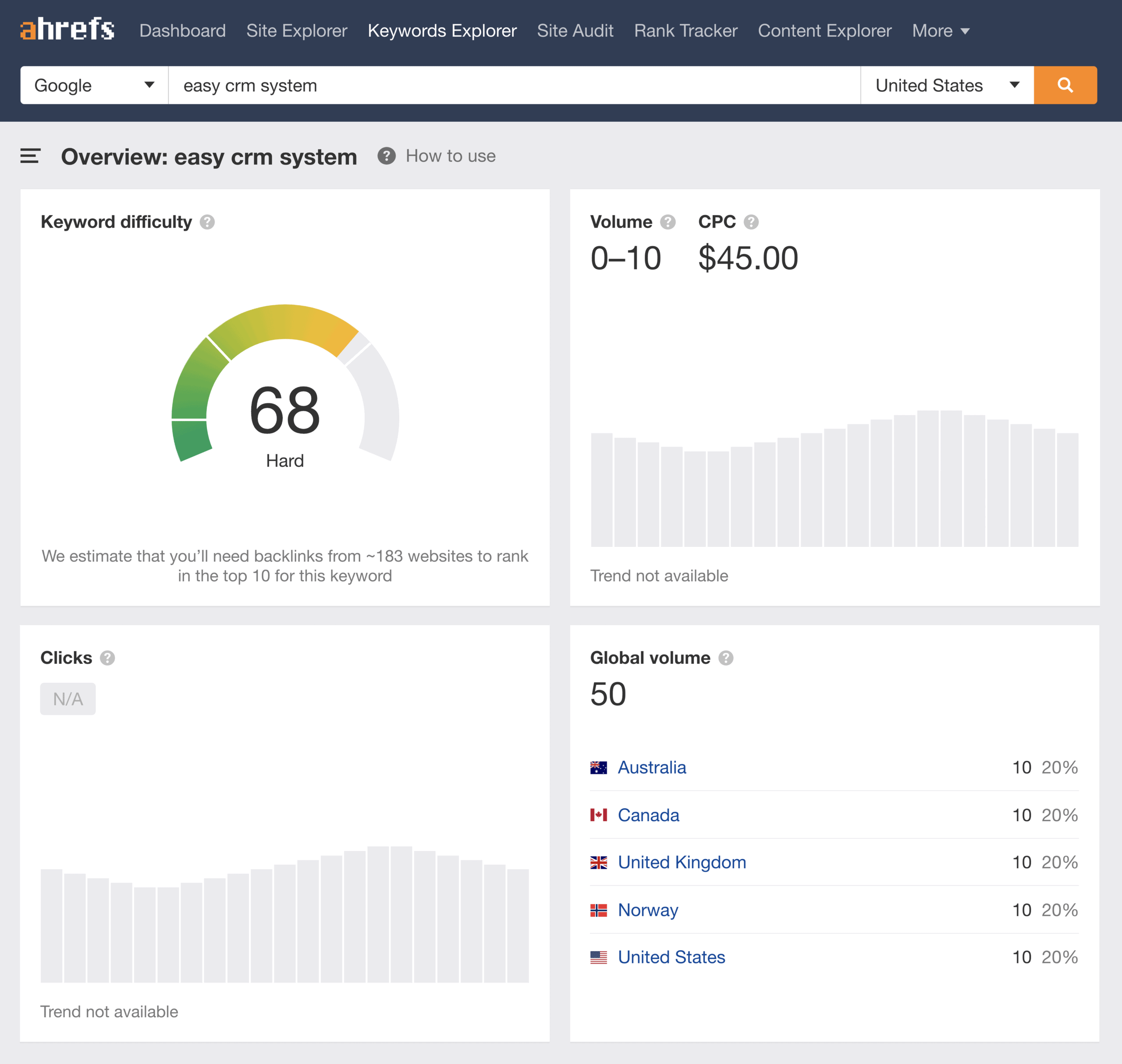
At first glance, this keyword might not seem so great. It only gets 0-10 searches per month. And it’s somewhat competitive.
But the CPC on that keyword is $45.
Which shows that there’s serious buyer intent there. Otherwise, people wouldn’t be bidding on that term in Google Ads.
So if you sell a CRM tool, this is a keyword that’s probably worth targeting.
I’ve actually been focusing more on CPC. And less on search volume.
This has led me to target keywords like this:
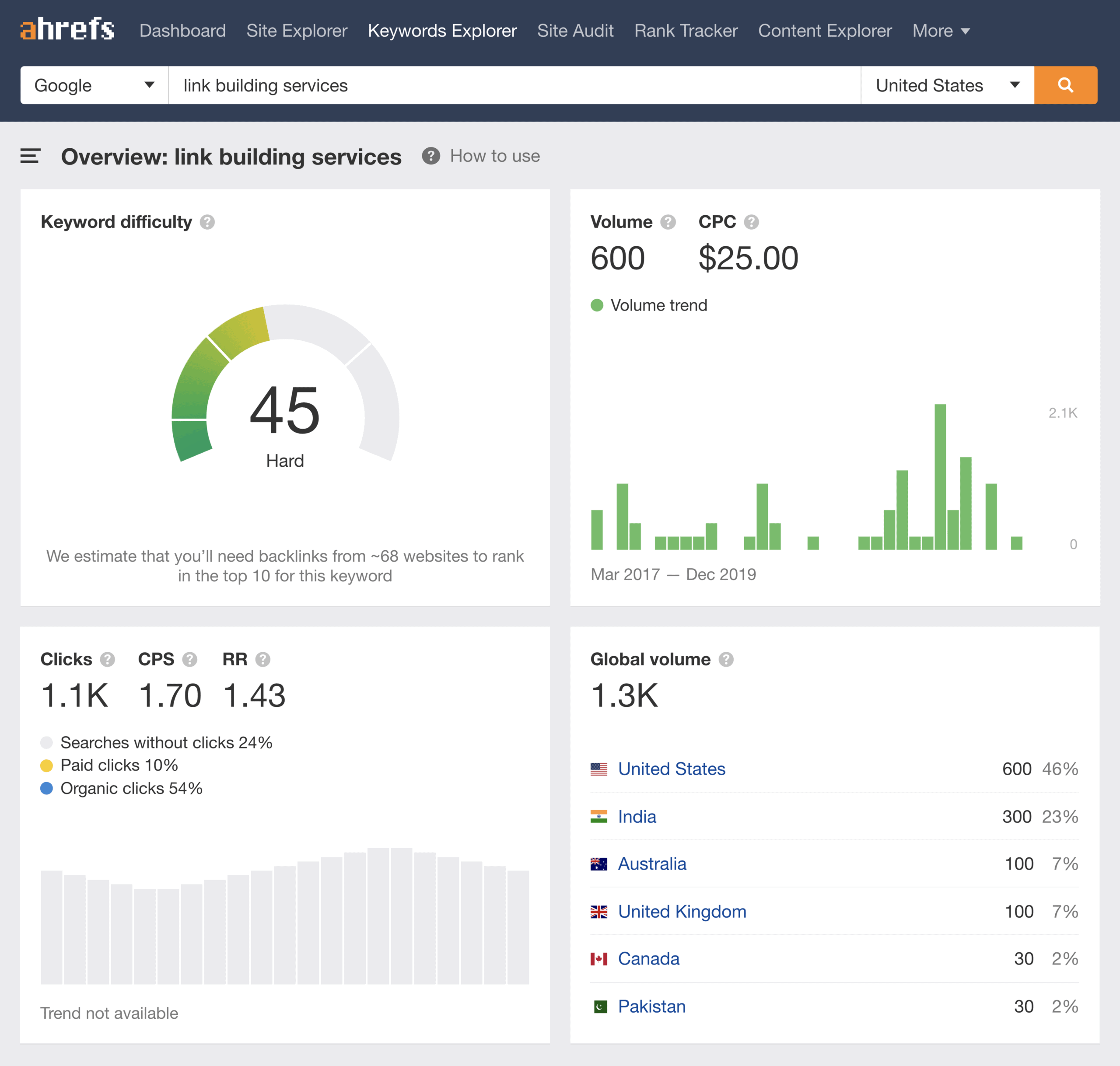
In the past, I would have filtered out any keyword with search volume below a certain amount (usually 1k searches/month).
But I realized a while ago that this was a mistake. And that a good chunk of my marketing efforts was going towards content that customers didn’t really care about.
As a B2B company, I don’t need to create SEO content for the masses. I need my content to get in front of the right people.
Which is why I’ve been publishing less content with mass appeals, like this:
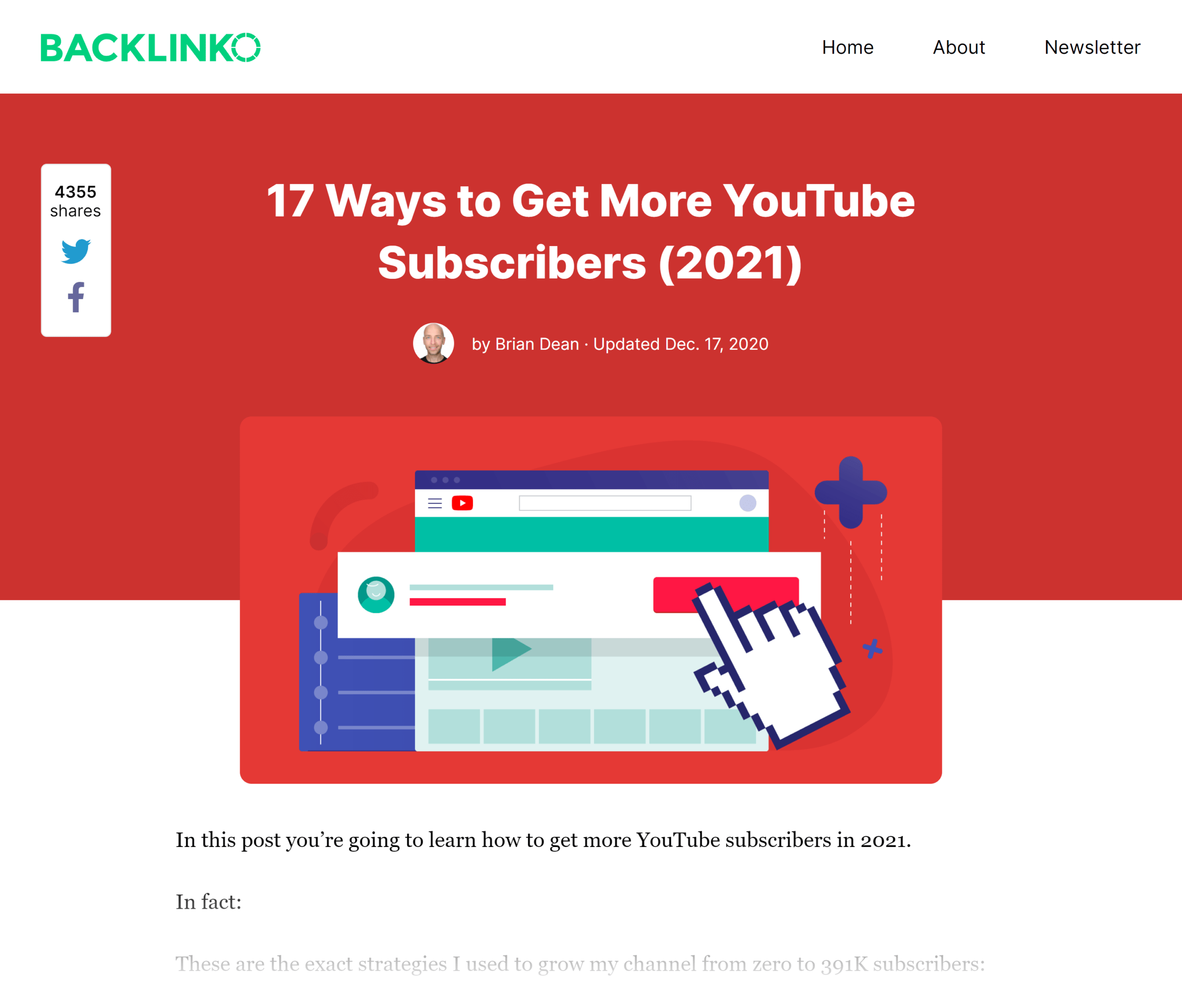
And more content that addresses a specific pain point, like this:
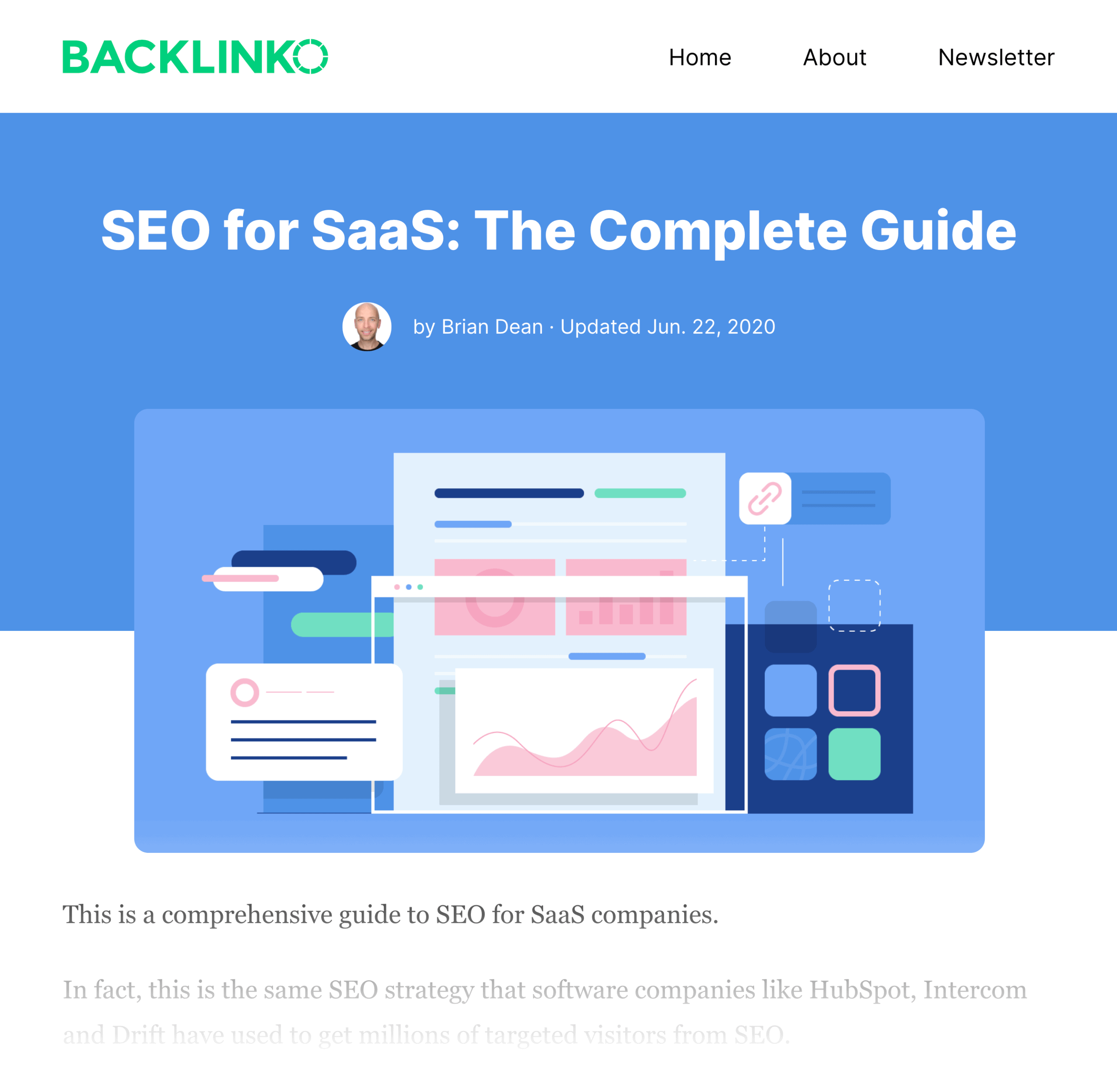
13. Keep Your Blog Content Up-To-Date
Many B2B blogs have old content collecting dust on their blog.
Needless to say, outdated content isn’t going to rank well in Google.
And if people DO find that content, it’s not going to make them want to sign up as a lead.
The solution?
Regularly update your existing blog content.
Now:
Depending on how many posts you have on your blog, this can take a while.
But in my experience, it’s well worth the effort.
For example, I update this guide to SEO every year.

I add new strategies. Remove things that no longer work. Update the examples. And try to cover the major changes in the search engine optimization world.
Which is one of the main reasons that this guide continues to bring in a solid pipeline of visits each month.
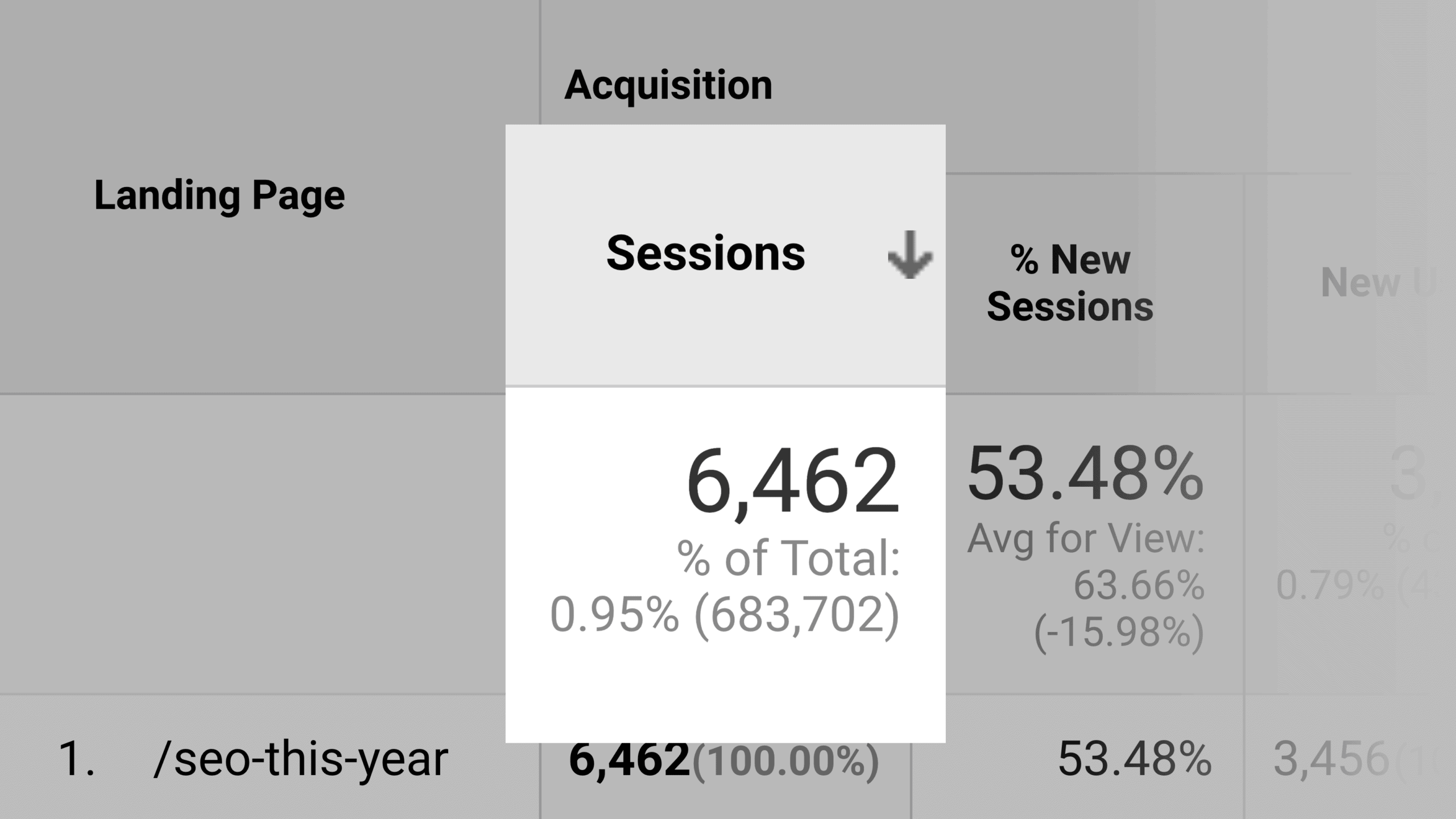
If you want to take this approach to the next level, try “The Content Relaunch”.
This is where you update, improve and re-post your older content as a new post.
So instead of quietly updating a post. You relaunch is like it’s brand new.
(And if you make enough significant changes, the post should be basically new.)
For example, I first published this post on SEO copywriting in 2015.
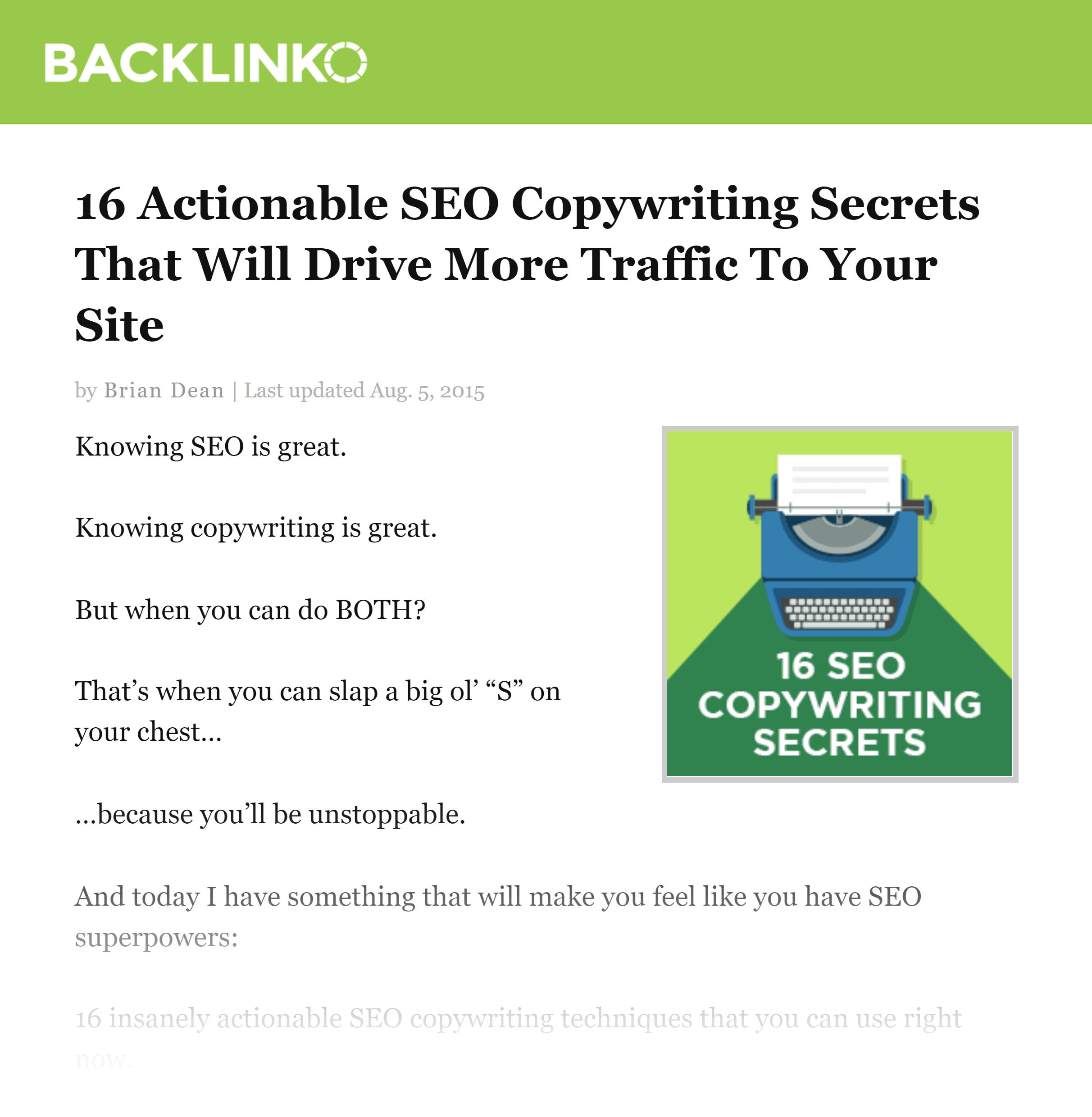
As time went on, traffic to that page steadily dropped.
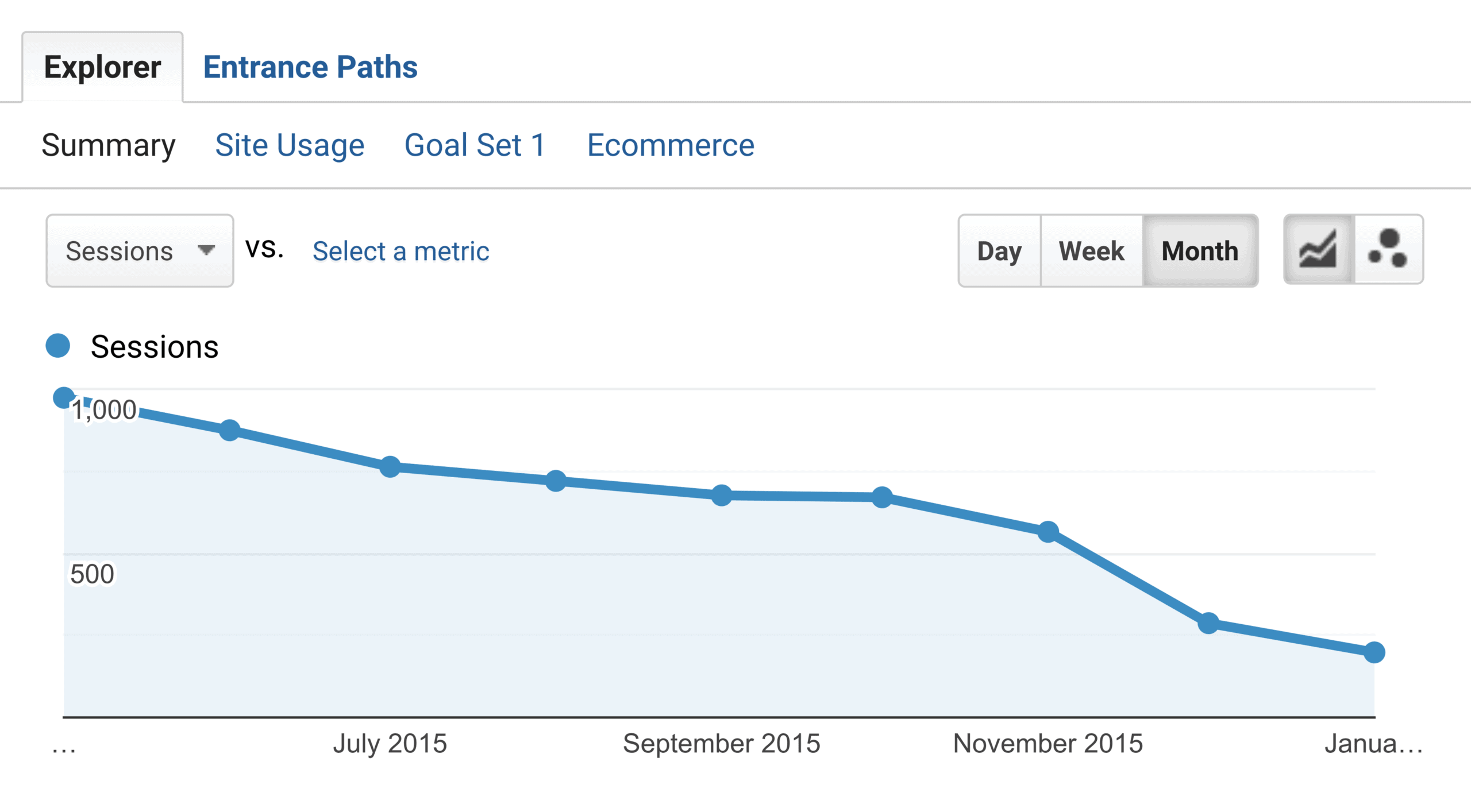
And that was mainly because the post was straight up outdated.
So I decided to give that post a complete overhaul. Specifically, I changed it from a list post into a guide.

A lot of the content was the same as the original post. But I added some new strategies too.

And this “new” post was well received by my audience. Most of which hadn’t ever read the original post.

14. Bring Warm Leads Back With Retargeting
Retargeting is a great way to get your ads in front of SUPER targeted m.
(Specifically, people that visited one of your important landing pages.)
For example, for Exploding Topics, we use Facebook ad retargeting to drive visitors back to our pro newsletter landing page.
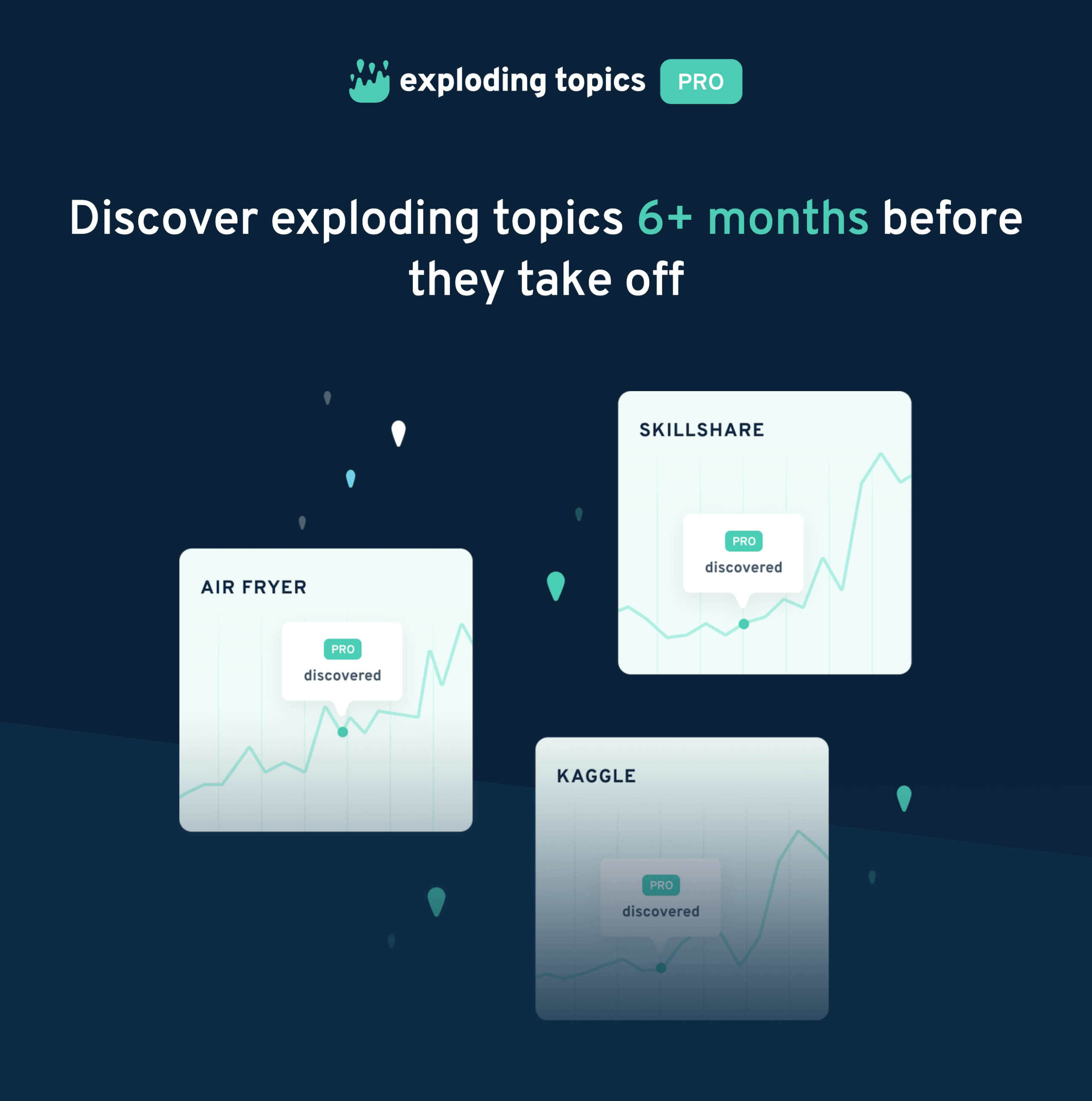
Specifically, we advertise to anyone that visited our landing page within the last 30 days.
I know you can do complicated retargeting (for example, you can tailor ads to reflect the specific page someone visited).
But I like to keep things simple.
To be clear: retargeting usually hasn’t been a game-changer for us.
But it does lead to a trickle of conversions that we probably wouldn’t get without aggressive retargeting.
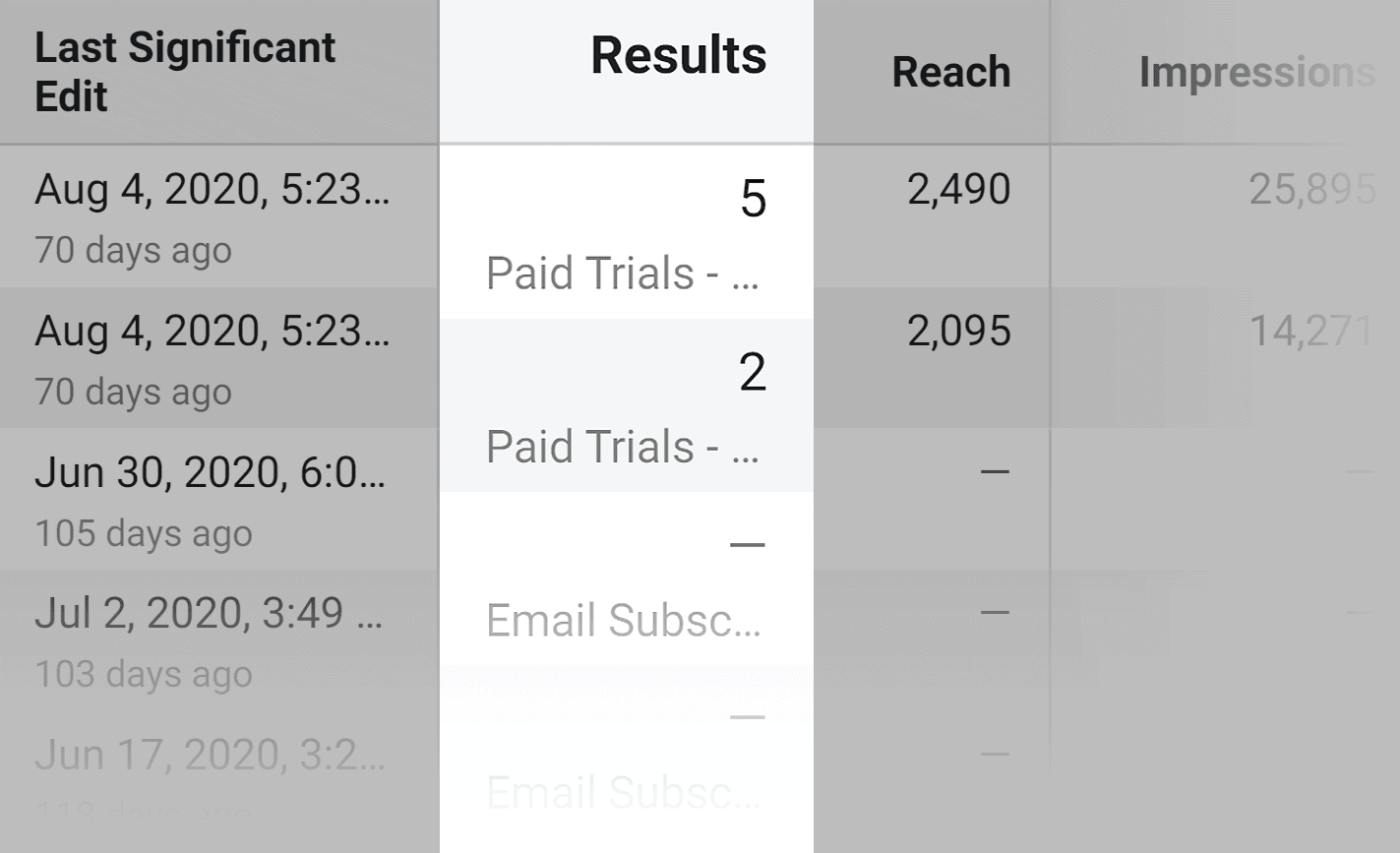
(As you can see, we pay a lot per trial. But that’s B2B for you! 🙂 )
15. Partner Up With Other Businesses
Partnerships are one of the most underrated B2B marketing tactics on the planet.
In my experience, the right partnership can lead to:
- More B2B leads and referrals
- Increased brand awareness
- Strategic relationships
- Reduced marketing costs
- And more
For example, last year we teamed up with Noah Kagan on this piece.
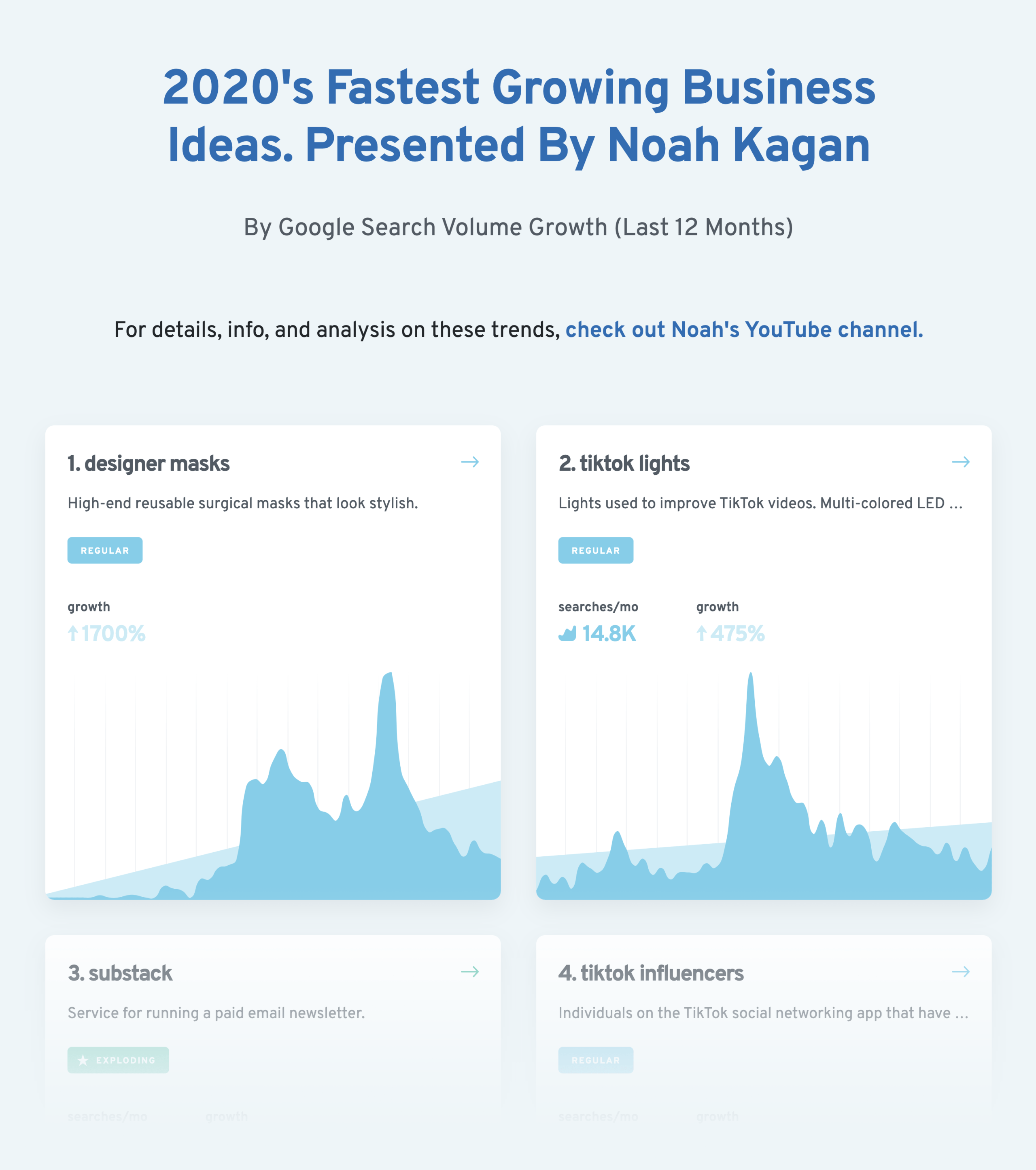
Noah wanted to create a list of growing product categories. And we had the data on which types of products and businesses had fast-growing demand.
So we created a list just for Noah. And Noah shared our list with his email subscribers.
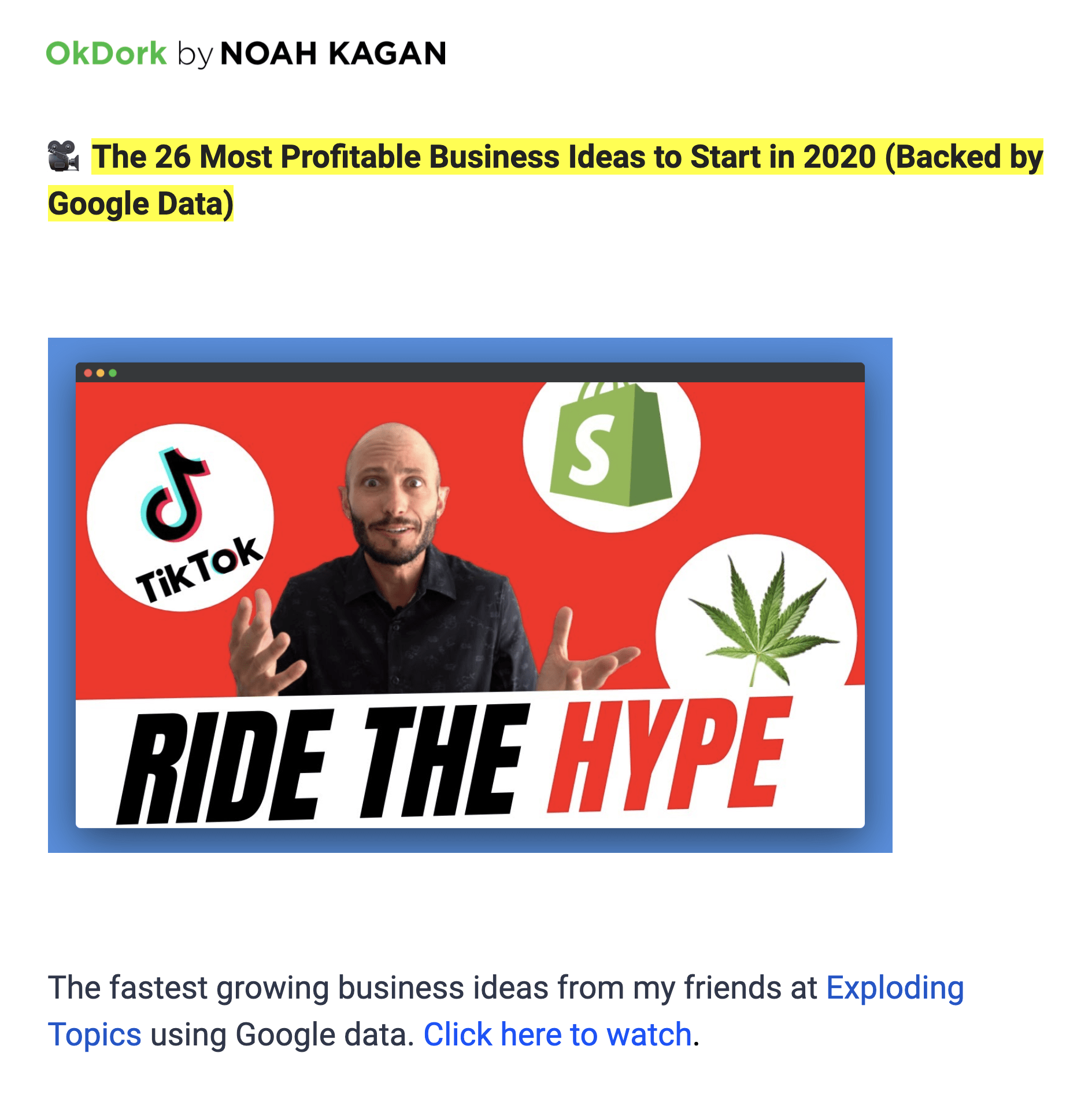
And even created an entire video about our list.

This partnership was a classic win-win scenario.
Noah got original data that he could package into a video. And we got exposure to Noah’s huge audience of small business owners.
16. Write Content For Influencers In Your Niche
Here’s the deal:
Most B2B customers don’t have popular blogs.
Or huge social media followings.
Which means they’re not going to share your content with their audience.
(Because they don’t have one.)
That’s why it’s important to create content that appeals to your industry’s “Linkerati”: the folks in your niche that have the ability to share and link to your content.
For example, take a look at this post that I published a while back.
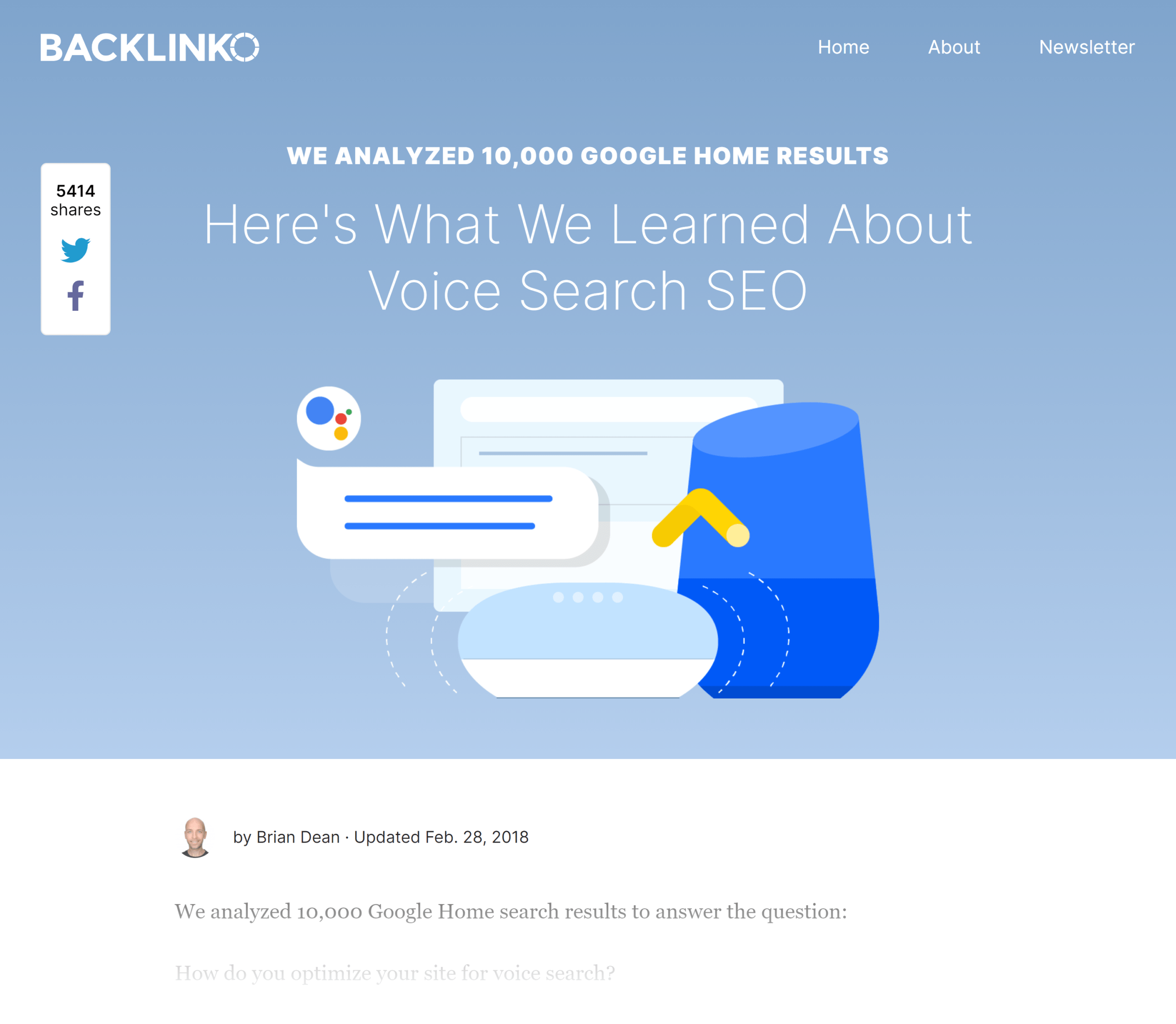
I created this content with my industry’s Linkerati in mind. Specifically, people that run blogs about SEO and digital marketing.
In fact, the findings from that industry study got featured on the HubSpot blog:
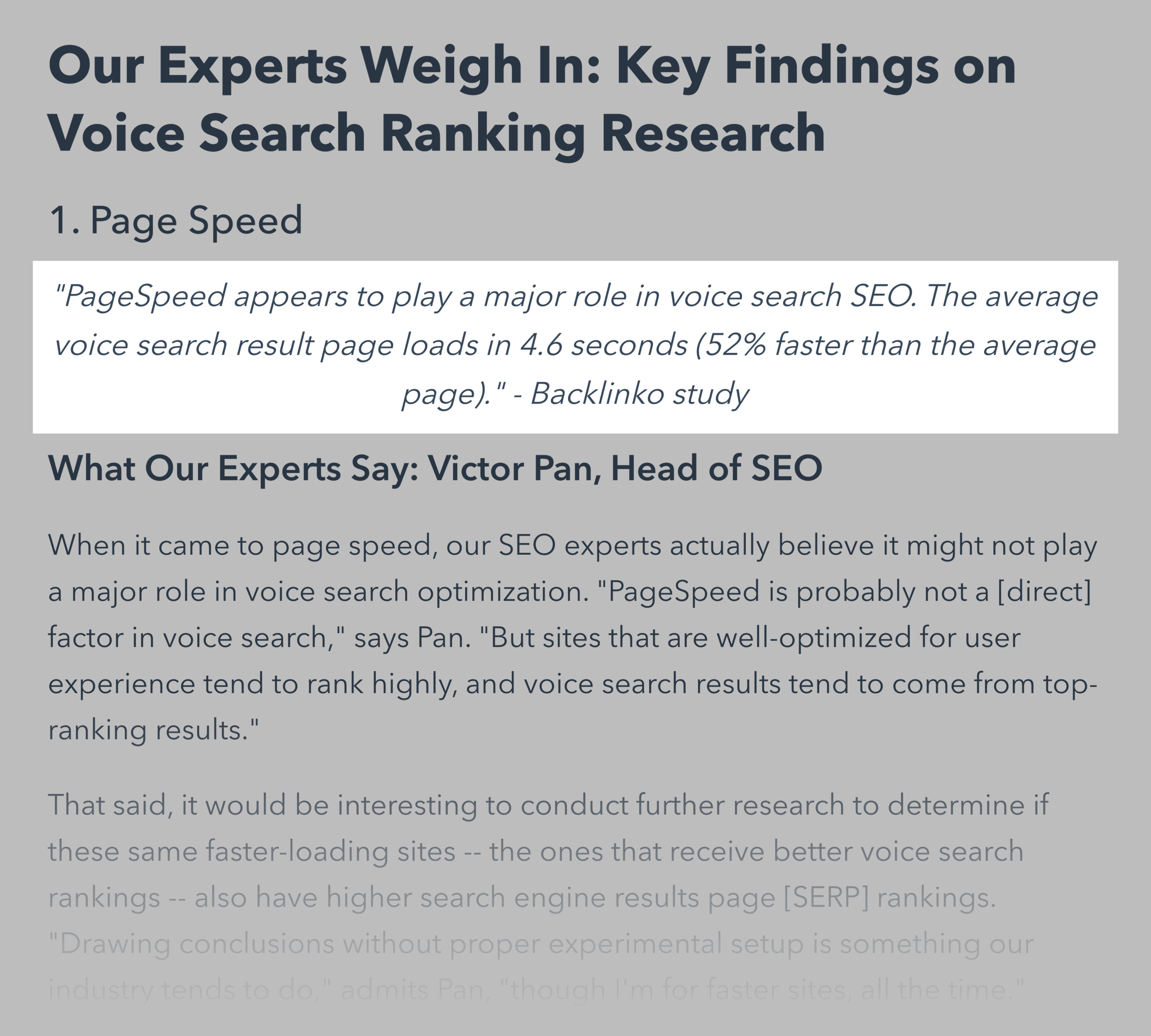
Obviously, I wanted my target audience to get value from the content too. Which they did:

But my main goal with that piece was to create something that my “Linkerati” would want to share and link to.
17. Create Visual Content
When most people hear the term “visual content” they think: “infographics”.
And yes, infographics can still work in certain cases.
But infographics are just one of many visual content formats out there.
There’s also:
- Animated GIFs
- Charts
- Visualizations
- Drawings and sketches
- Flowcharts
And more.
In fact, visual content is PERFECT for B2B.
That’s because many B2B topics are complicated. Boring. Or both.
Visual content can help spice things up. And make hard concepts easier to understand.
For example, I tend to use quite a few charts in our industry studies.
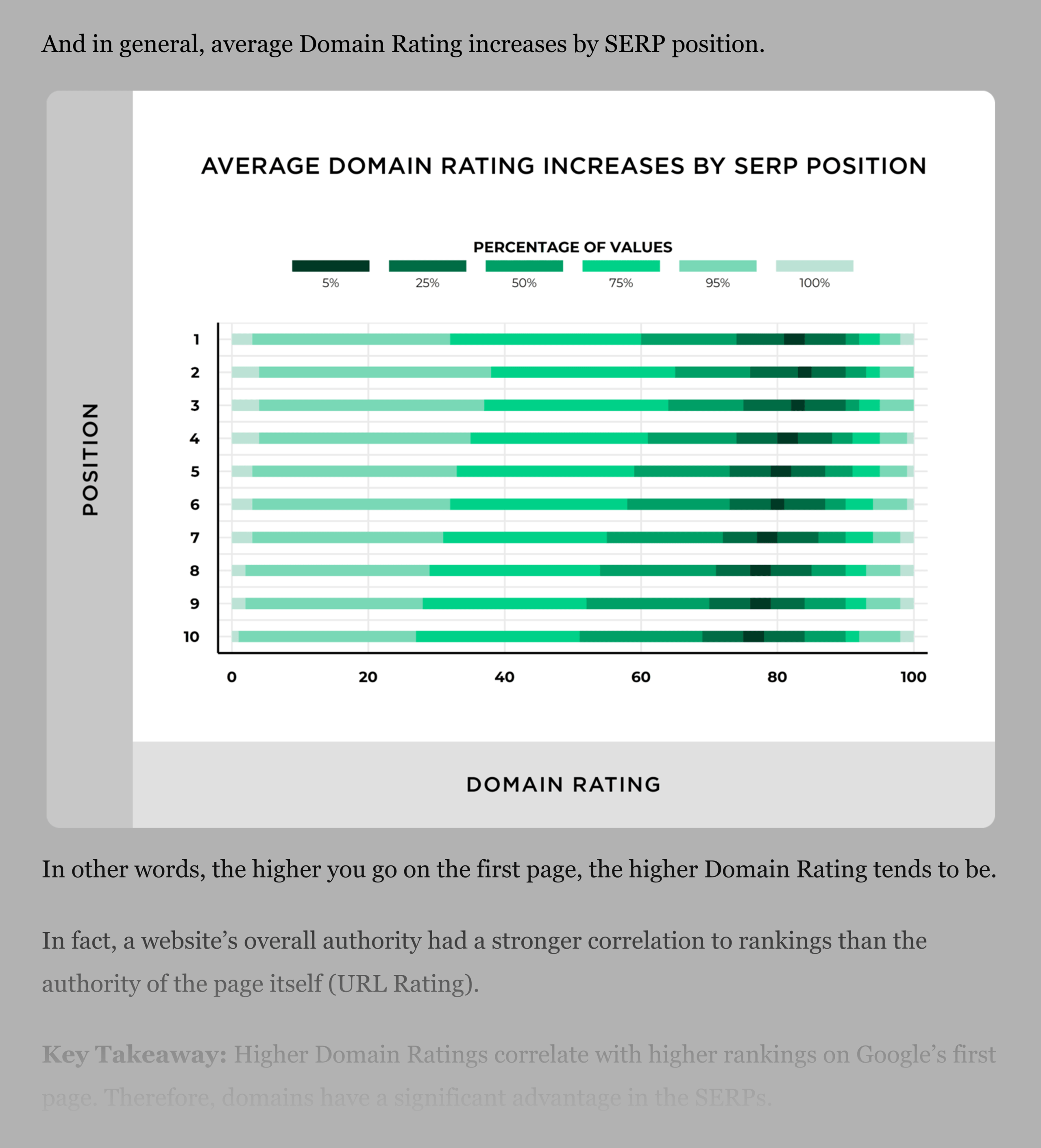
Charts make our content straight-up better. And they give our “Linkerati” something that they can share on social media.

And use in their blog content.

Bonus #1: Test Question Headlines
When we looked at 900M published articles, we found something very interesting:
Headlines that contained a question tended to get about ¼ more social media shares than headlines that didn’t contain a question.

This is likely because question headlines grab attention. And make someone want to see the answer to that question.
Which can lead to a higher click-through rate.
In my experience, question headlines can work well on social media. But also for improving organic CTR in Google.
For example, I tend to use a lot of question title tags for pages optimized around “definition keywords”.
(In other words: keywords that people use to find out what something is.)
That way, the question headline is kind of reading their mind.
For example, this page from my site is optimized around the keyword “rich snippets”.
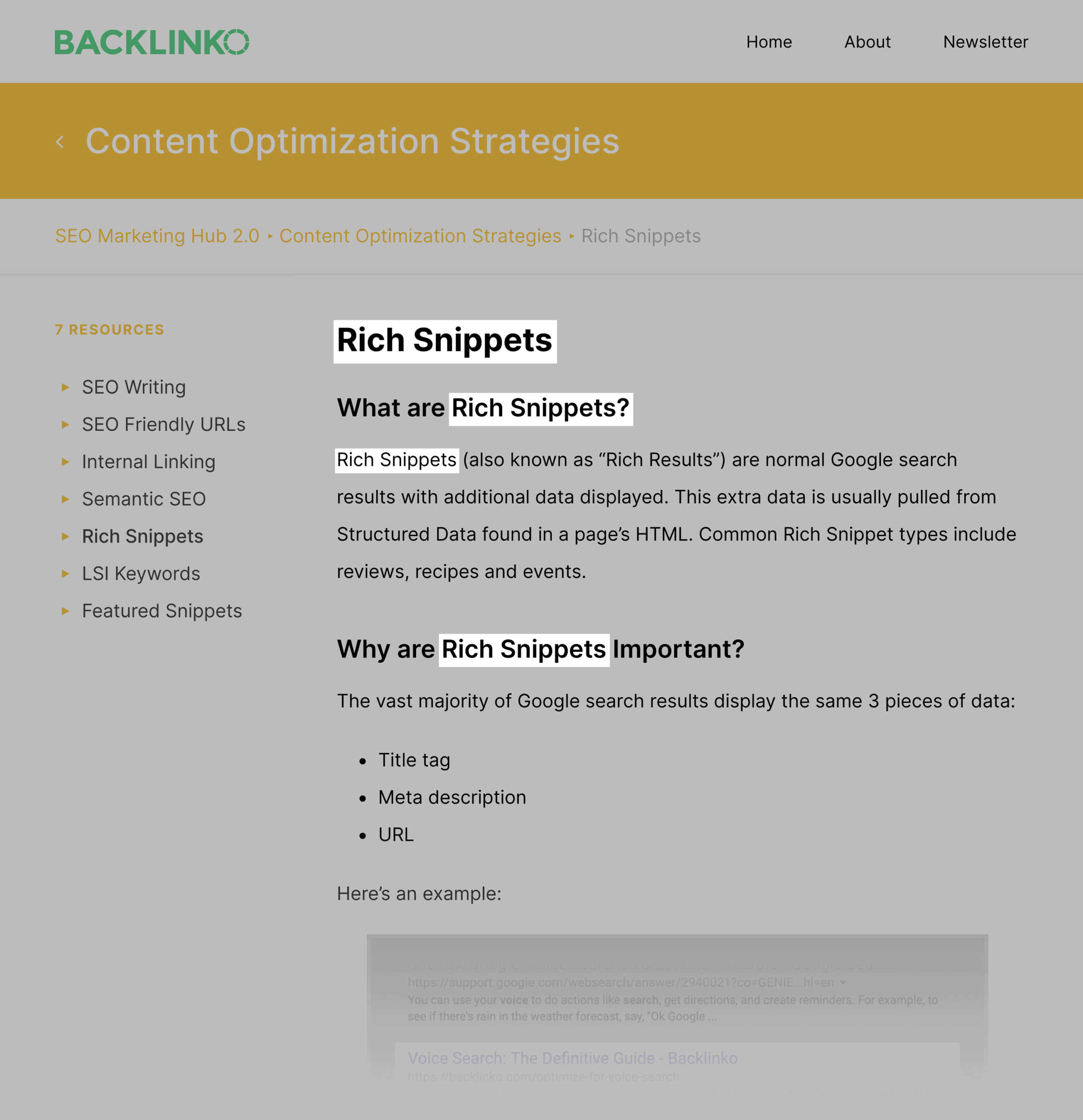
Anyone searching for “rich snippets” is probably wondering what the term means.
And my question-based title tag lets people know they’ll get an answer to their burning question.
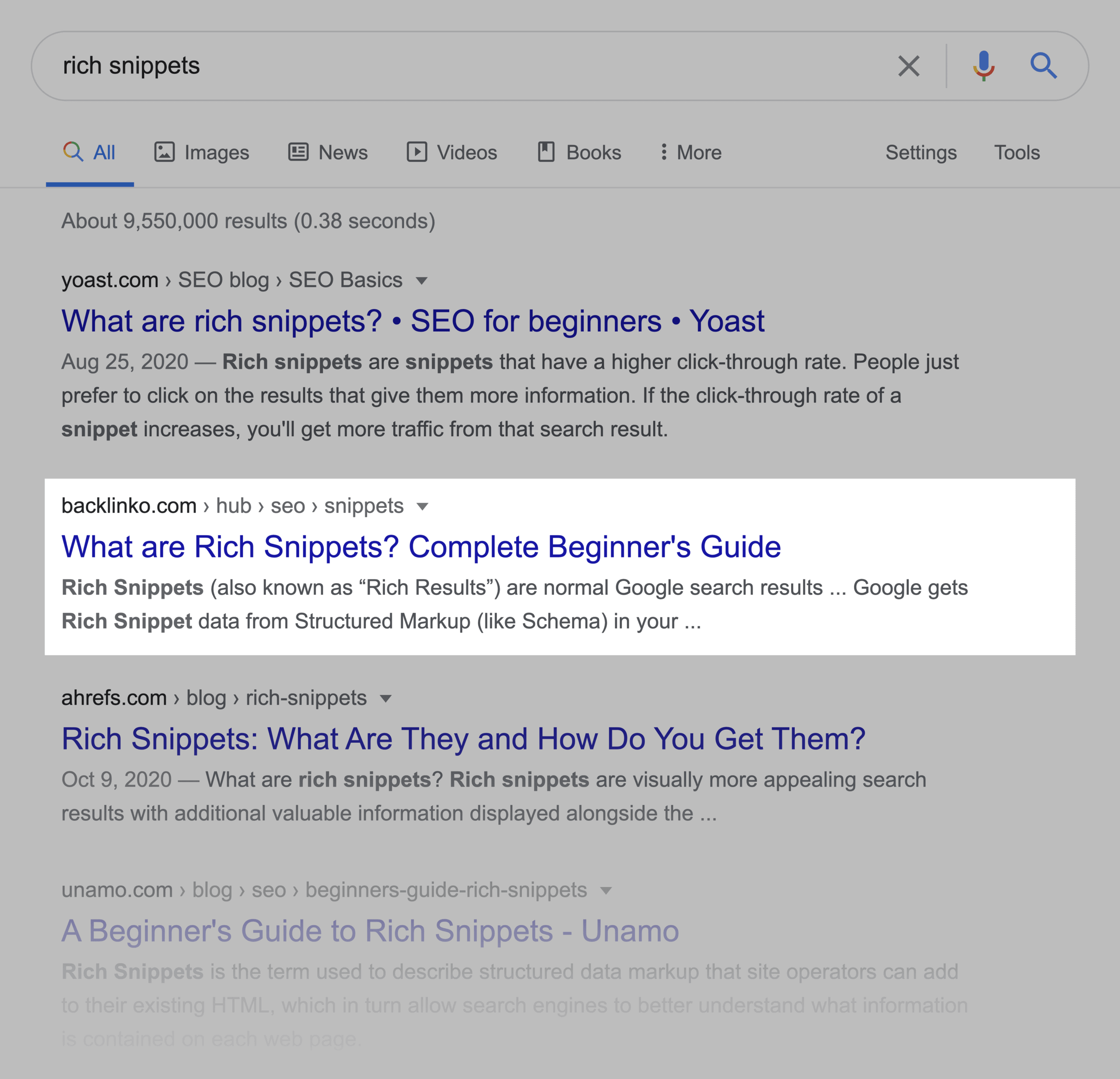
Bonus #2: Create a Useful Tool
Launching Exploding Topics has really opened my eyes to the power of “Tool Marketing”.
In fact, the Exploding Topics site brings in over 88k visitors per month.
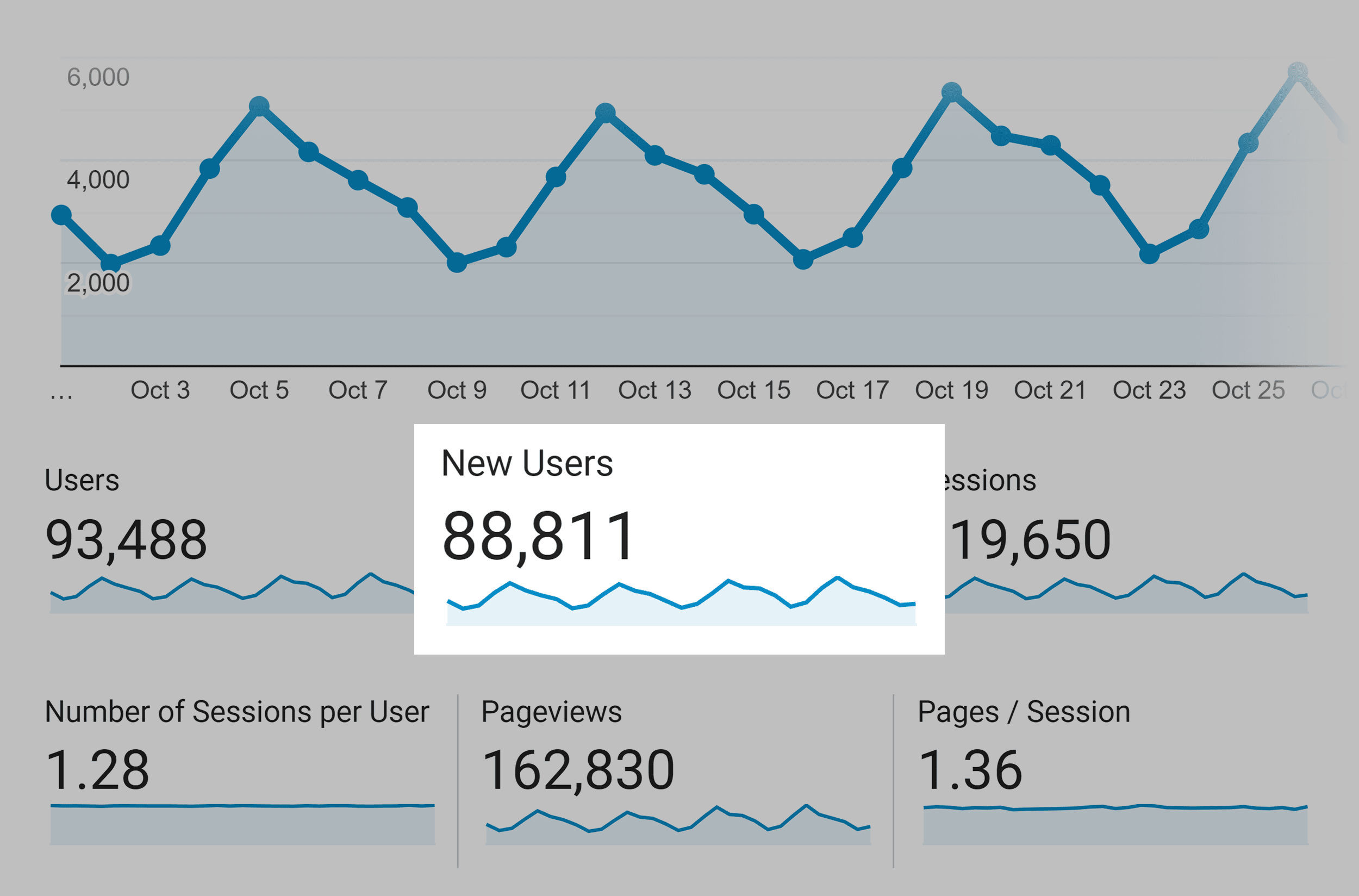
Yes, we have a blog. And an active Twitter account.
But the vast majority of that traffic comes from the fact that the site is at its core a super useful tool.

The best part?
That traffic tends to roll in organically. People share our tool on social media. With their colleagues. Or with their marketing teams.
All without us needing to actively promote it.
Which brings in a nice pipeline of targeted traffic each month.
Let’s take a look at another example from the B2B world:
This shipping calculator by Parcel Monkey.
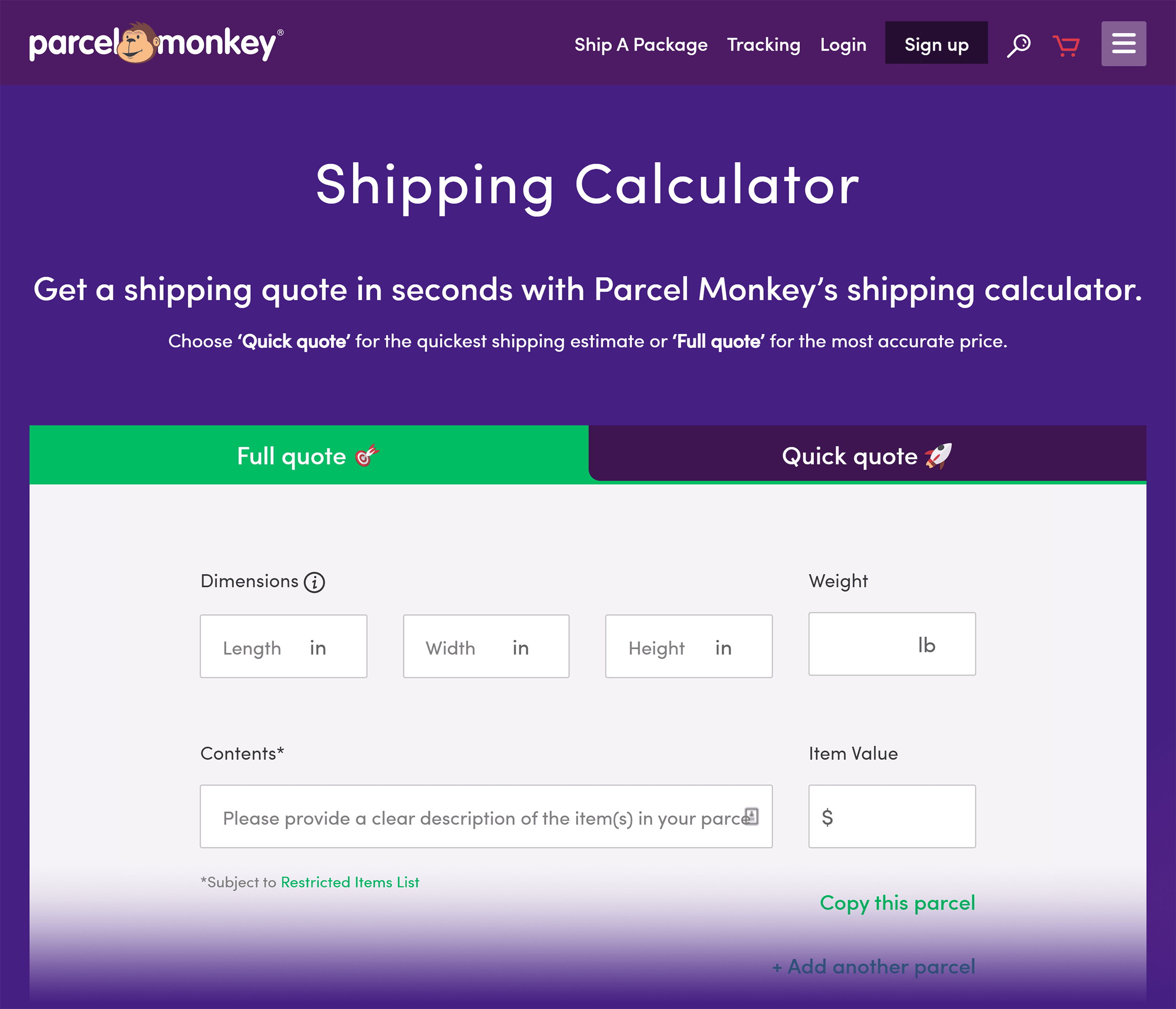
According to Semrush, this single page brings in 9.6k visitors from Google each month.
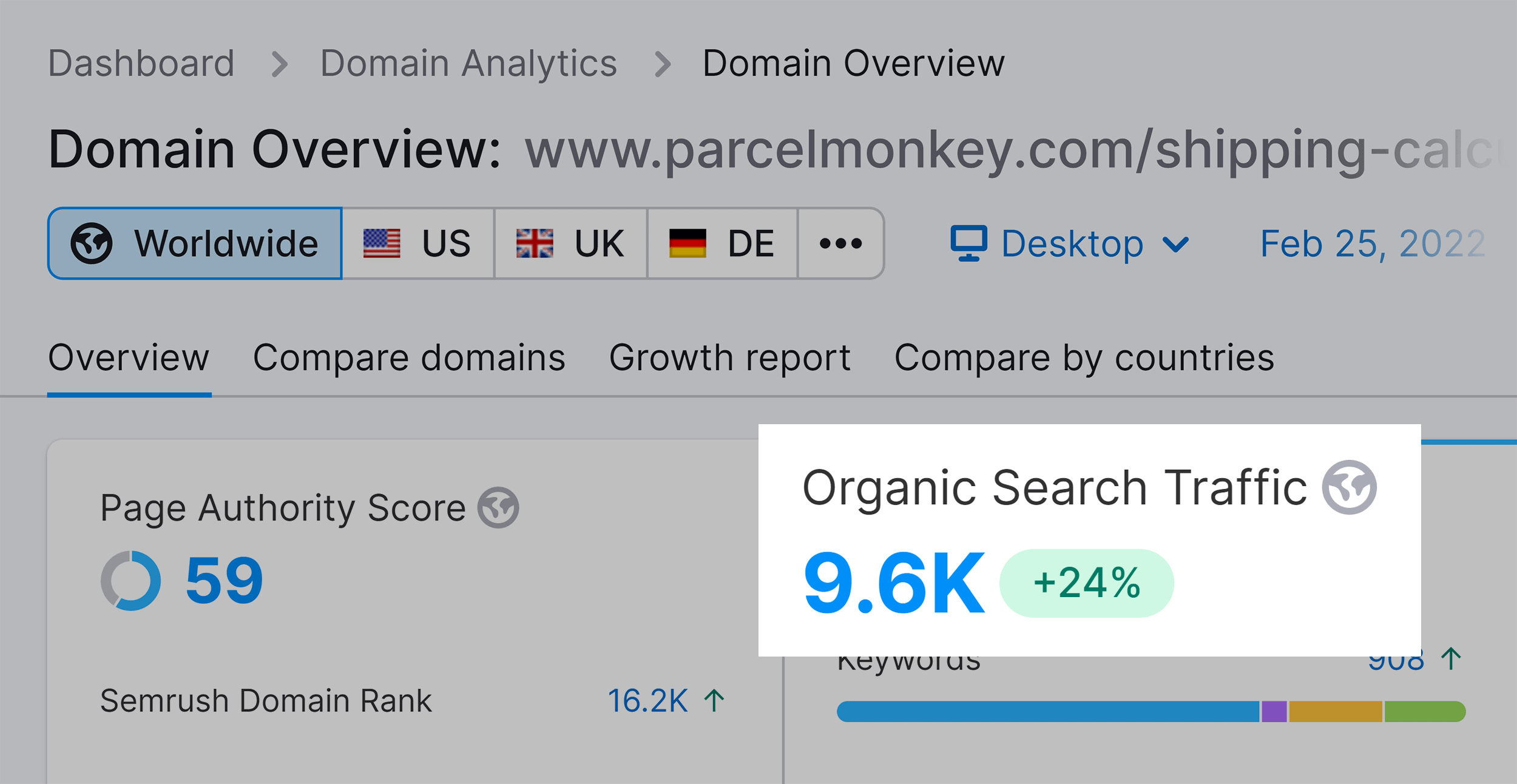
Not bad for a relatively simple tool.
Conclusion
I hope you enjoyed this list of untapped B2B marketing strategies.
Now it’s your turn to chime in.
Let me know in the comments section below which technique you’re going to test out first.
